32 Biggest Swing Faults... And How To Fix Them!
We take a look at some of the most common mistakes club golfers make - and offer a helpful tip or two on how to correct them
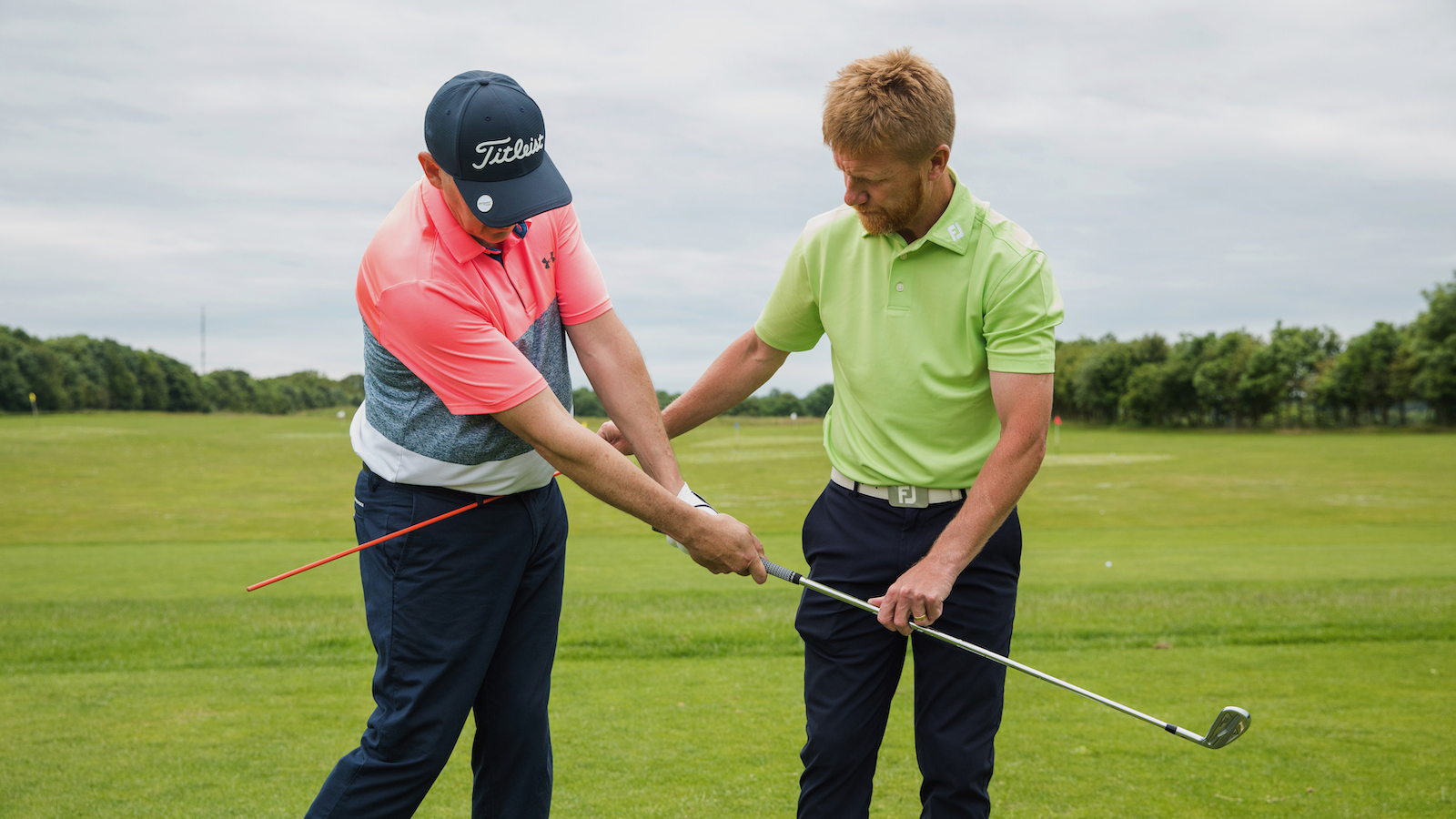

Let's face it, golf is hard. There's quite a lot that can go wrong when swinging the club from point A to point B - it's quite a complex move. The Tour pros make this game look easy, but even they struggle with common swing faults and destructive shots at times, be a it a slice, a hook or a poor strike.
In an effort to help you improve your golf swing, we've identified some of the most common swings faults, and come up with a number of helpful tips from a panel of top coaches on how to fix them. Of course, there might other reasons why your angle of attack is too steep or you're losing the ball to the right, but the hope is that you find something here to take to the range and work on. Good luck!
Elbow separation (fairway woods)
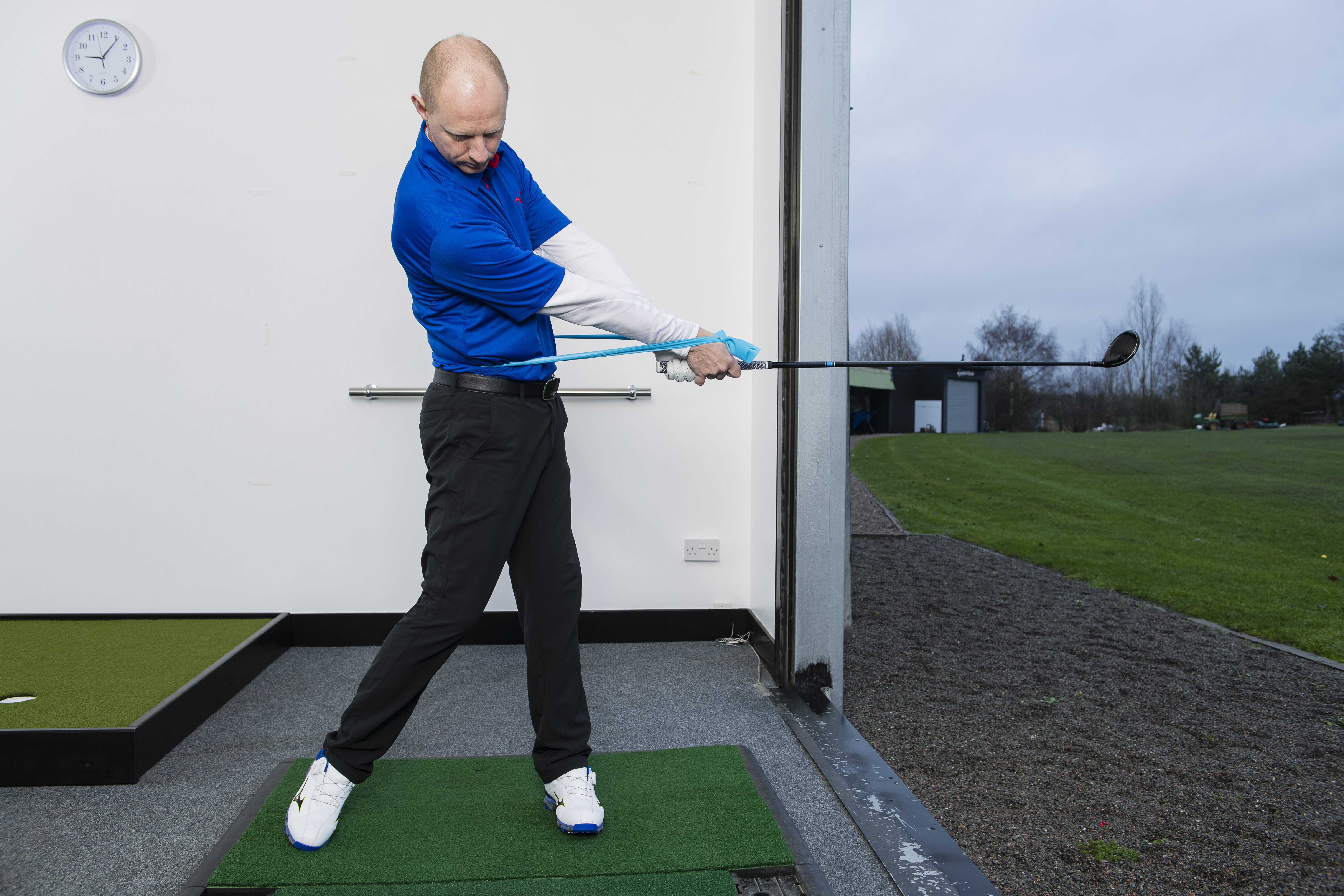
The tops are a common fault, and especially so when club golfers use their fairway woods; the elbows tend to separate and the wrists try to rescue the shot. Apply a resistance band (as shown above). You'll have to fight the resistance by pulling your arms back towards your body. This drill helps you get used to feeling your arms extending as you go out and down towards the ball. After a few swings, remove the band and you should find it’s far easier to get your arms extended. Brush the ground with the sole and get that ‘whoosh’ sound. This will tell you that you’re extending the arms a lot more and your chances of topping the ball will be greatly reduced.
Lack of rotation

It’s important to get your weight going into your right side as you go back. At the top of your backswing, you should be looking to get about 75% of your weight on your trail side. At the same time, the focus needs to be on staying centered – no swaying or leaning back. Too many amateurs initiate the downswing with their hands and arms. Try squatting (as pictured above). Squatting will help you to transition with the lower body. As you go down, you open up your pelvis; you bend your knees and turn your hips.
Early extension
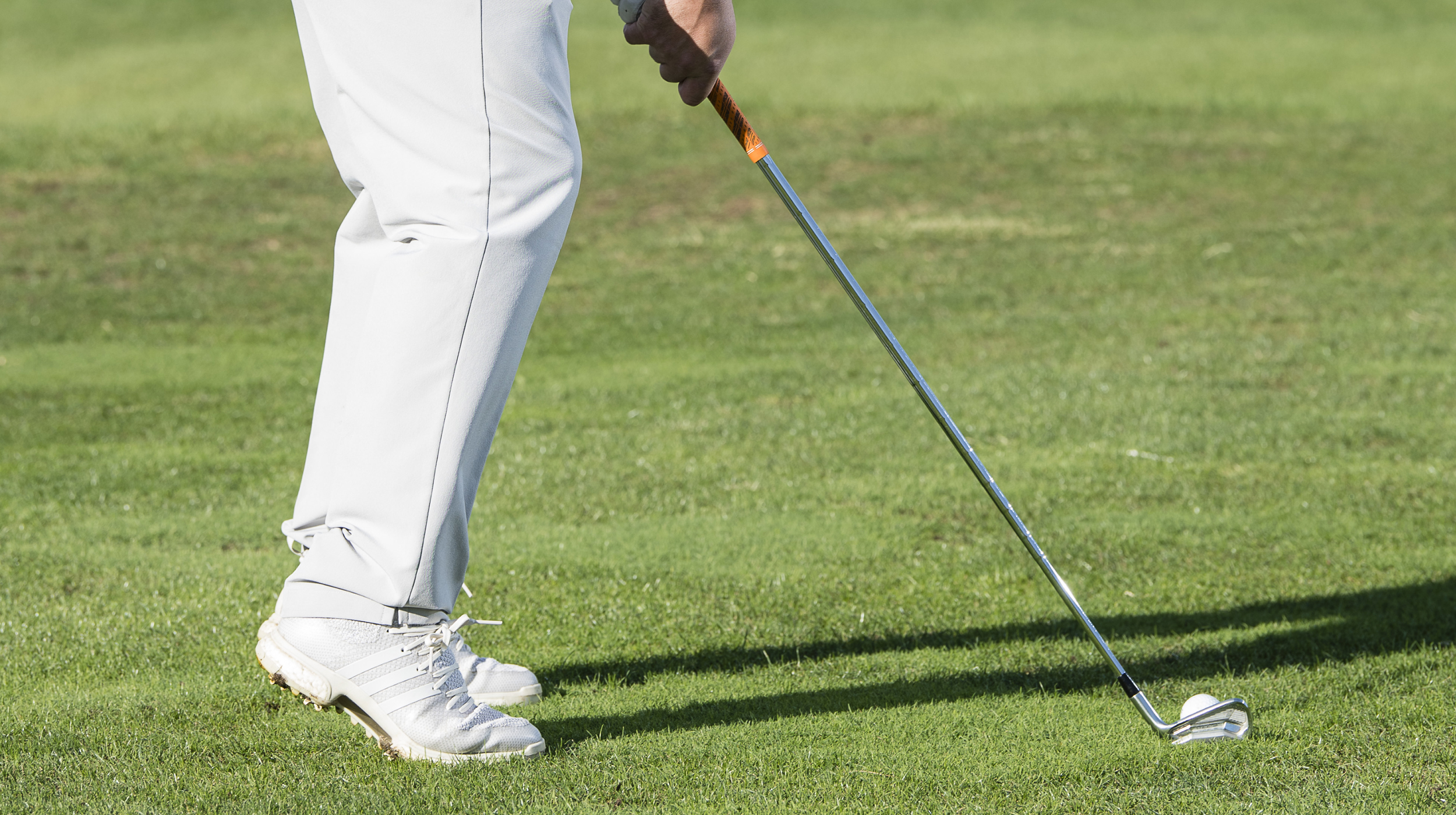
A large percentage of amateur golfers ‘early extend’, which is where the hips and pelvis move towards the ball in the downswing. It results in those good posture angles being lost and it leaves the arms with less room to move, so they'll often collapse. The end result is often a poor strike and/or a loss of accuracy - even the dreaded shanks can come into play. You want to maintain that flexion and posture throughout the golf swing as best as you possibly can. Set up normally, but get your heels airborne (as shown above), then try making a few slow swings. Work up to a full power swing gradually, working out where you seem to break down. Feel your weight moving towards your back end and away from the ball to encourage your upper body to flex over and make good contact.
Poor release
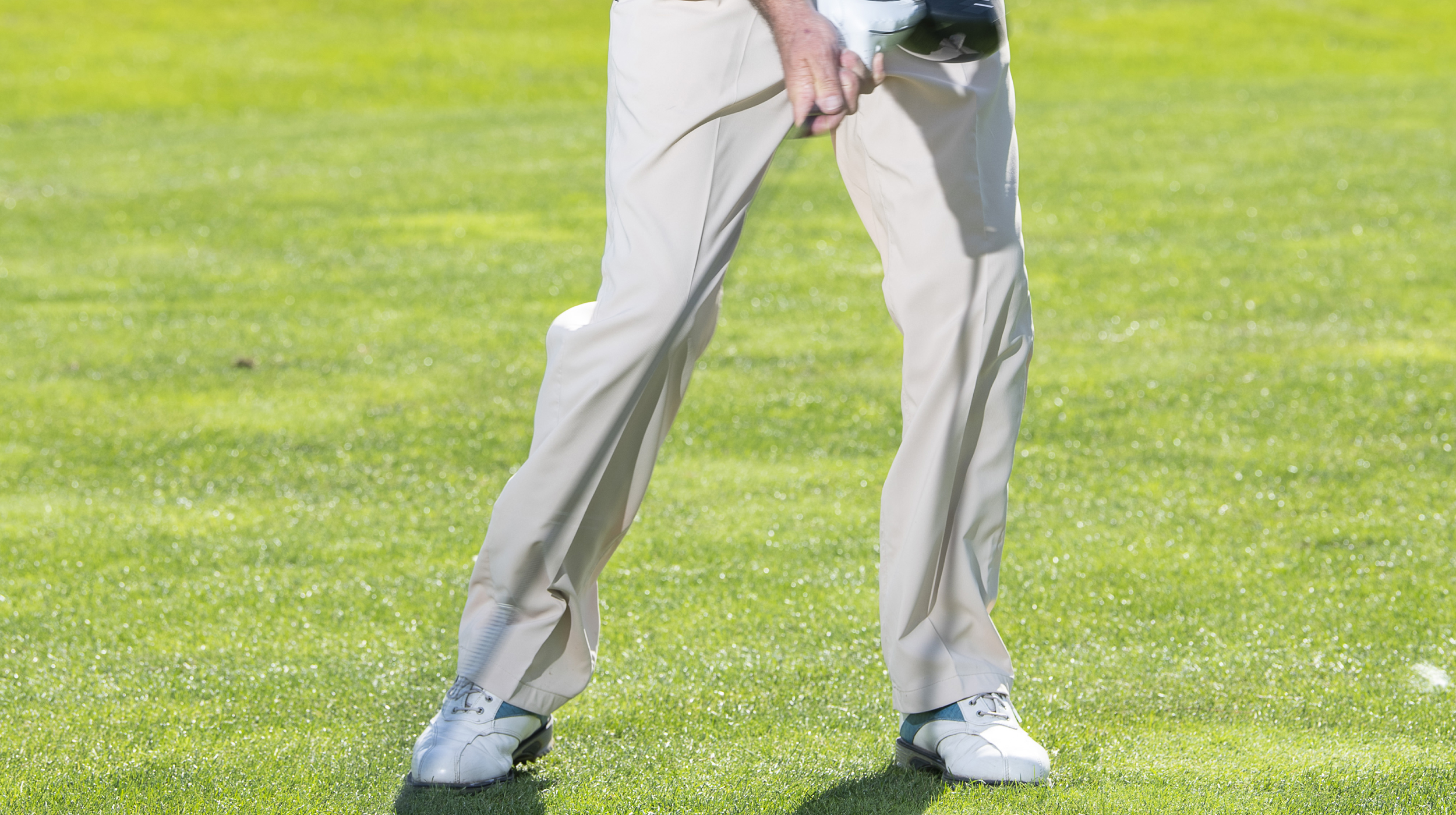
A simple way to develop your timing and release is to make some swings with a driver, holding it upside-down (as above). This will feel a little alien at first, but it’s a super drill to encourage you to get a ‘swish’ at the bottom of the swing, where you want maximum speed. Many amateurs unhinge their wrists too early before reaching the ball, or too late, which means they haven’t uncocked the hands and rotated their arms through impact. The swish should come through the impact phase of the swing.
Shallow attack angle (hybrids/long irons)
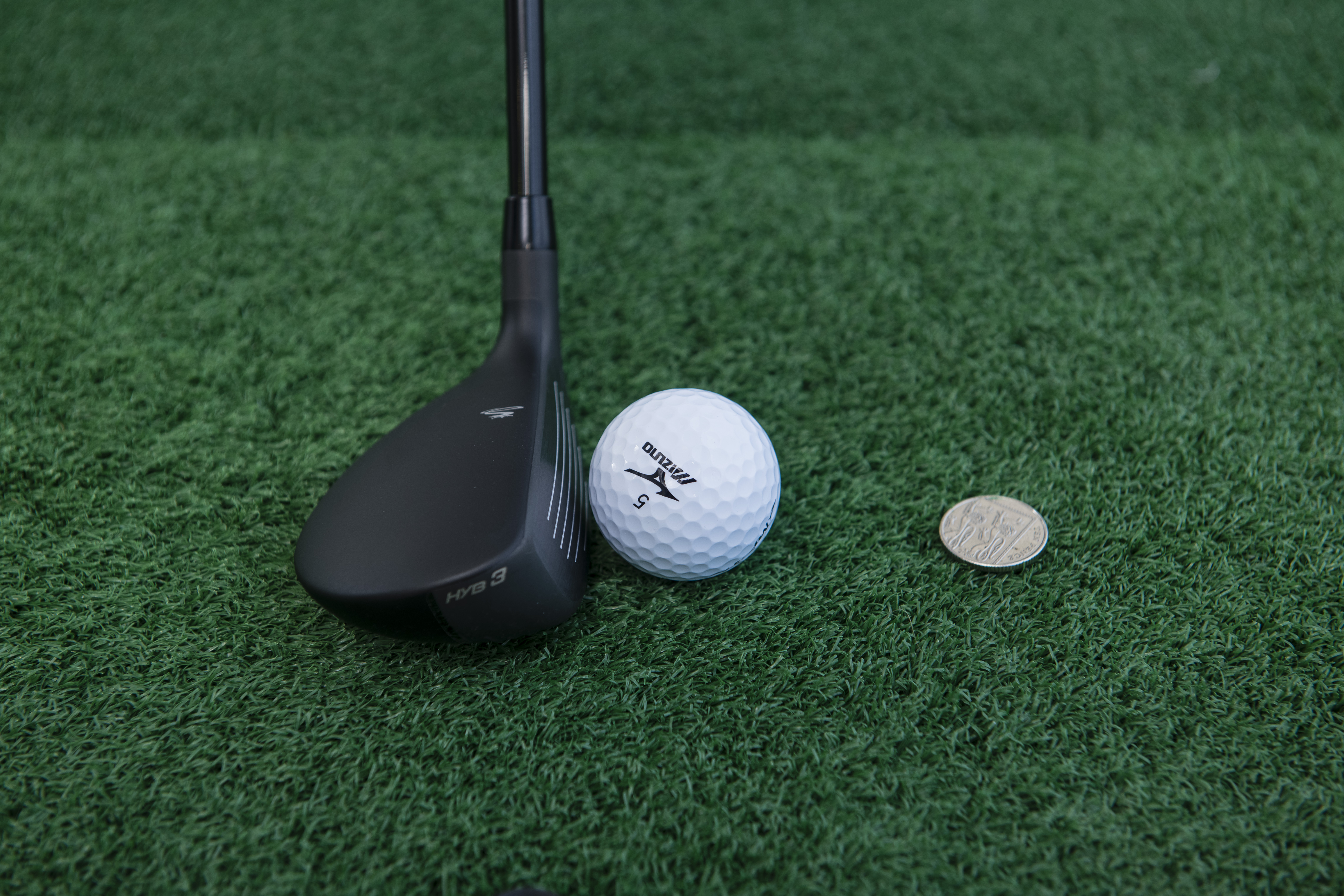
There’s a tendency for amateur golfers to hit hybrids with a shallow, upward strike. You’re actually after more of a downward impact, which is where this drill will help. Place a coin two or three inches in front of the golf ball (as shown above) and take your shot as you would do normally. If you miss the coin, it’s because the sole of the club is travelling upwards too soon – the likely result is a thin contact. You want to hit the coin, which tells you that you have the right downward angle of attack, one that will lead to more consistent and purer strikes.
Subscribe to the Golf Monthly newsletter to stay up to date with all the latest tour news, equipment news, reviews, head-to-heads and buyer’s guides from our team of experienced experts.
Lack of follow through
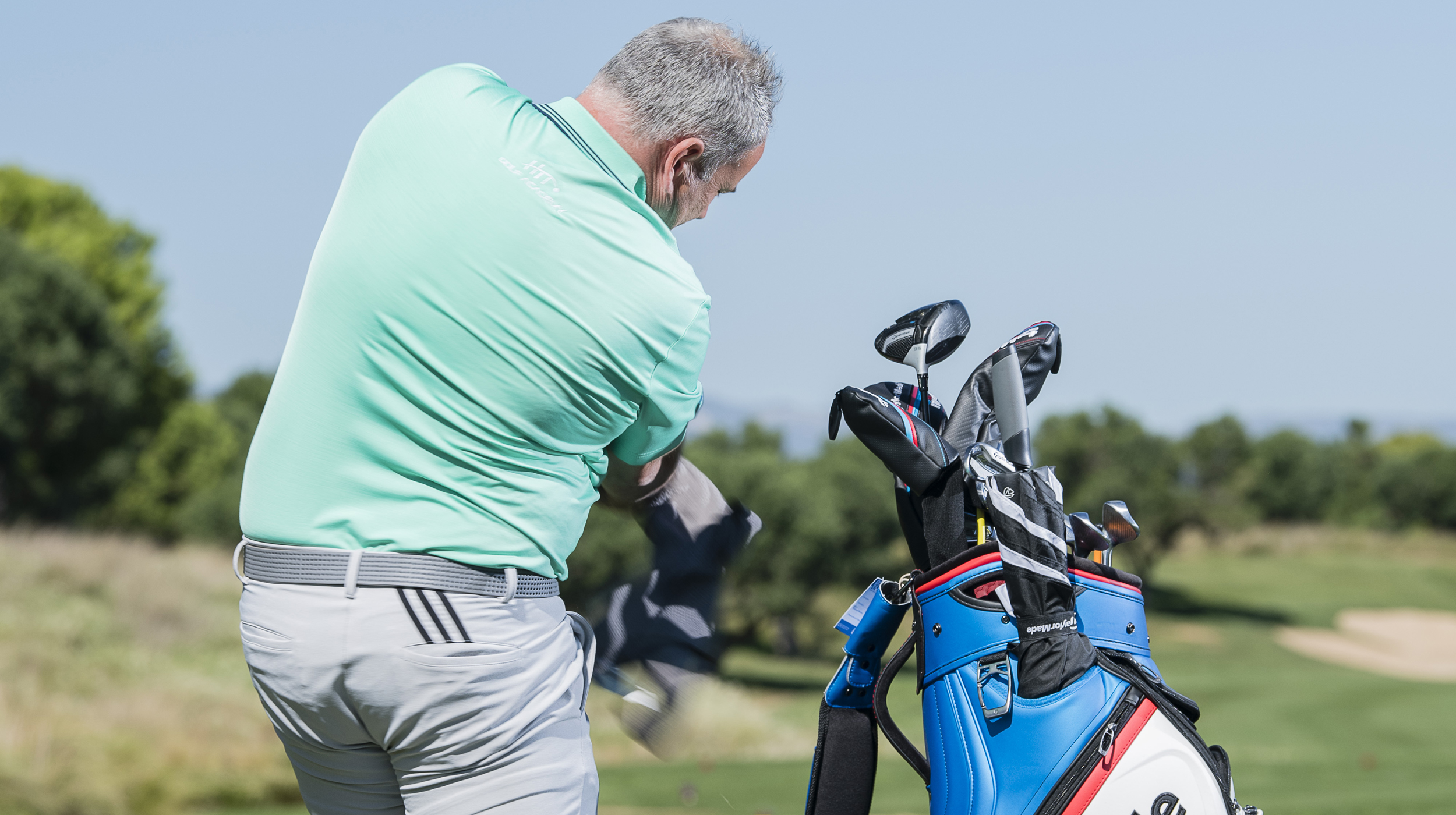
A lot of amateurs lose power due to a loss of turn, both in the backswing and follow through. You turn through your rib cage so you have your maximum range of movement to create the most speed and power. Using a towel to whip your bag, you can instinctively learn how to use your body muscles better. If you’re guilty of using your arms and hands only, and not your body, you will lose that stored energy early; the towel will be rather limp. Compare the sound of hitting the bag – much more of a crisp ‘snap’ (as above) – when you turn and rotate into the finish. This is that stored energy being released – and that translates into more power and distance.
Steep attack angle (fairway bunkers)
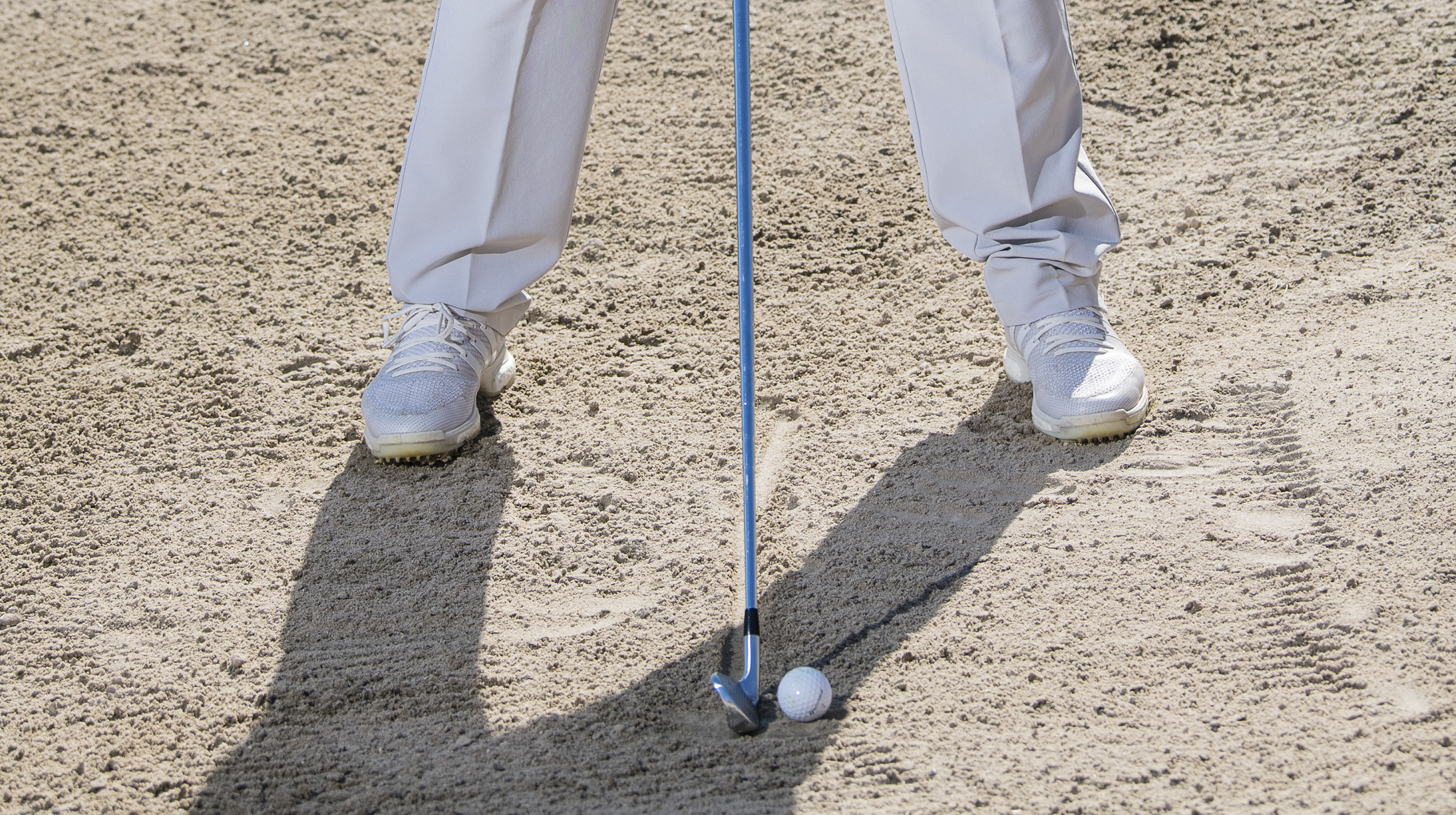
Lots of amateur golfers struggle to get the desired contact out of the fairway traps. The basics are always a good place to start – so check your set-up. If you come into the ball too steeply, you’ll just dig into the sand and you won’t get the strike and distance you need. Move the ball a touch further forward in your stance (as above) to shallow the attack angle a fraction. You may also want to try gripping down on the handle to help you avoid digging into the sand, and stand a little bit taller at address to raise the swing arc. As a result, you should just bruise the sand and not create such a large divot.
Coming over the top
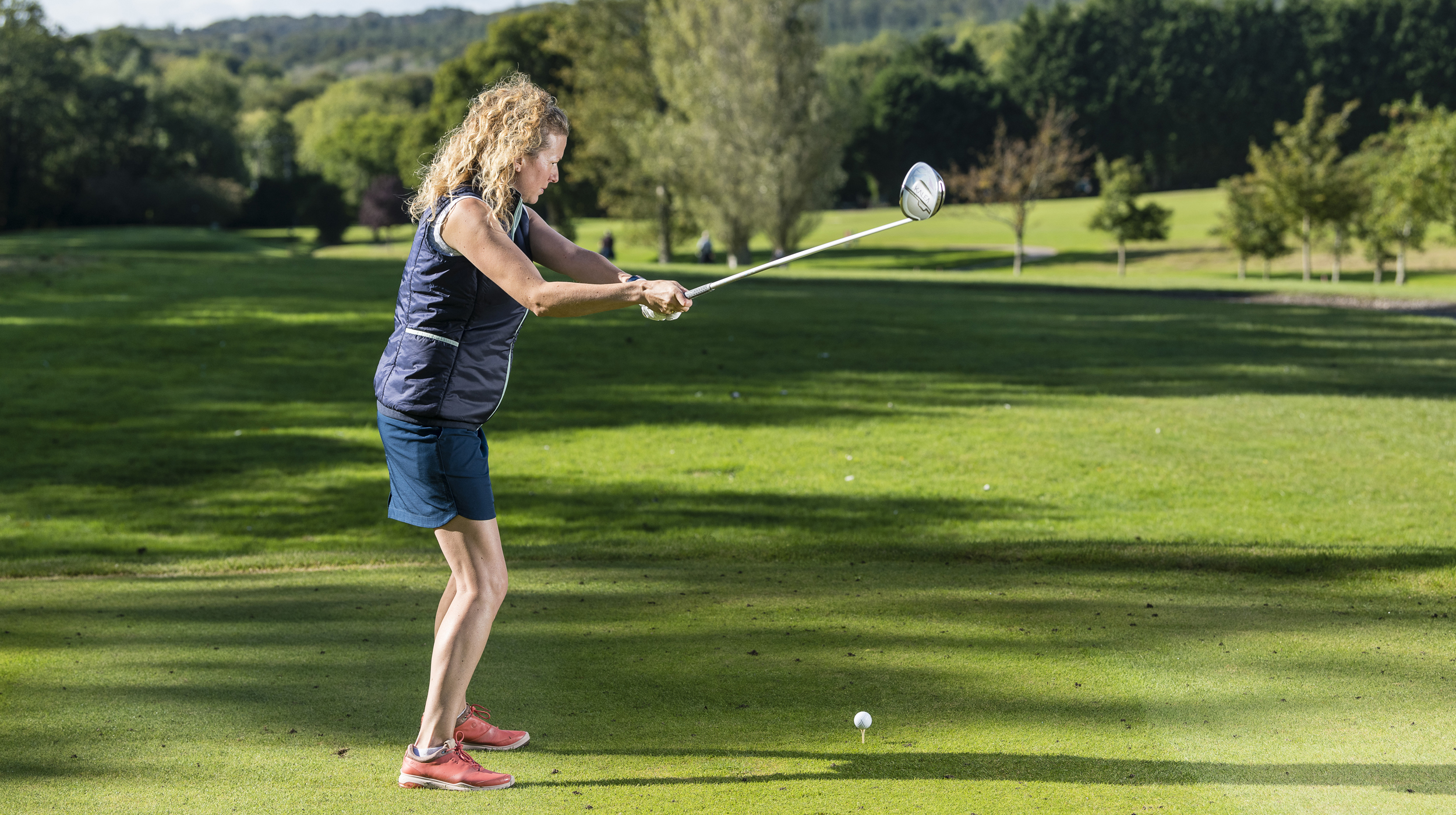
This is where we see the club and arms being thrown away from the body at the top of the backswing (as above). It’s a huge power leak and often when the club is thrown across the line, it’ll lead to a slice. The downswing is a reaction to a backswing that should have started from an athletic posture, therefore with balance – so it’s coiled up and has plenty of torque. This is then unwound through a natural kinematic sequence. If you struggle with your posture and are far from athletic when it comes to angles, try adopting a ‘ready to run’ stance, where your core and glutes are engaged. From there, you can wind up, then the unwind just happens, like letting go of an elastic band. You may also want to try swinging with your feet together. This will help with timing and calm down that throwing action from the top.
Swaying
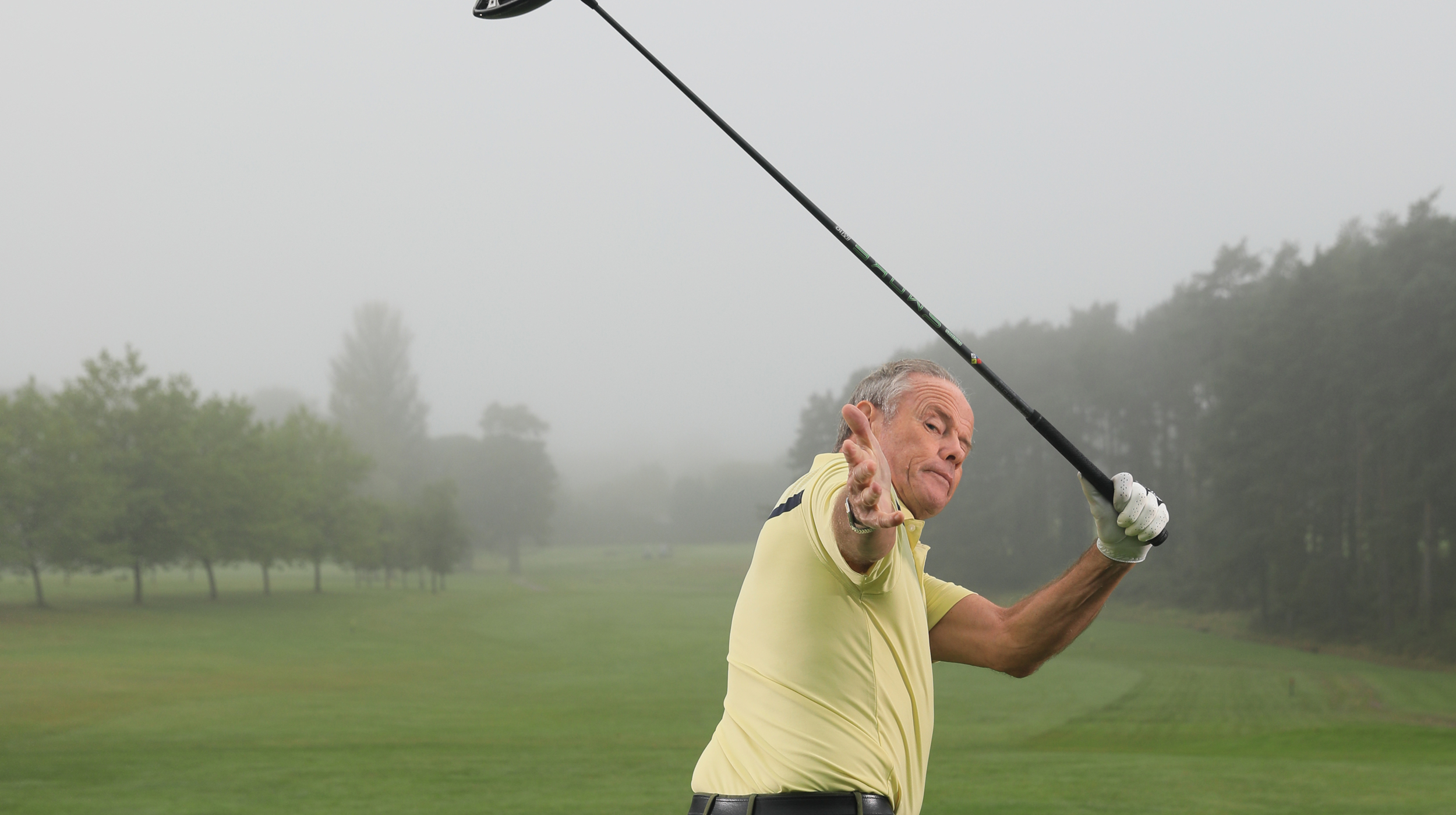
This is where players start the backswing by immediately shifting their weight onto their right leg - there's no turning with the hips at all, just a sway onto the right side. From there, the arms lift the club up into a really horrible position, so it’s pointing at the sky. Try this drill. Adopt a driving posture and turn back so that your left shoulder is above your right thigh (for right-handers). Imagine looking directly behind you as if you were about to talk to someone. You shouldn’t find yourself having to strain your neck. Note how the left shoulder in the shot above is well across behind the ball, as is the left knee. It’s a very simple drill to ensure that you turn properly and allow your weight to go in the right place.
Not completing the backswing
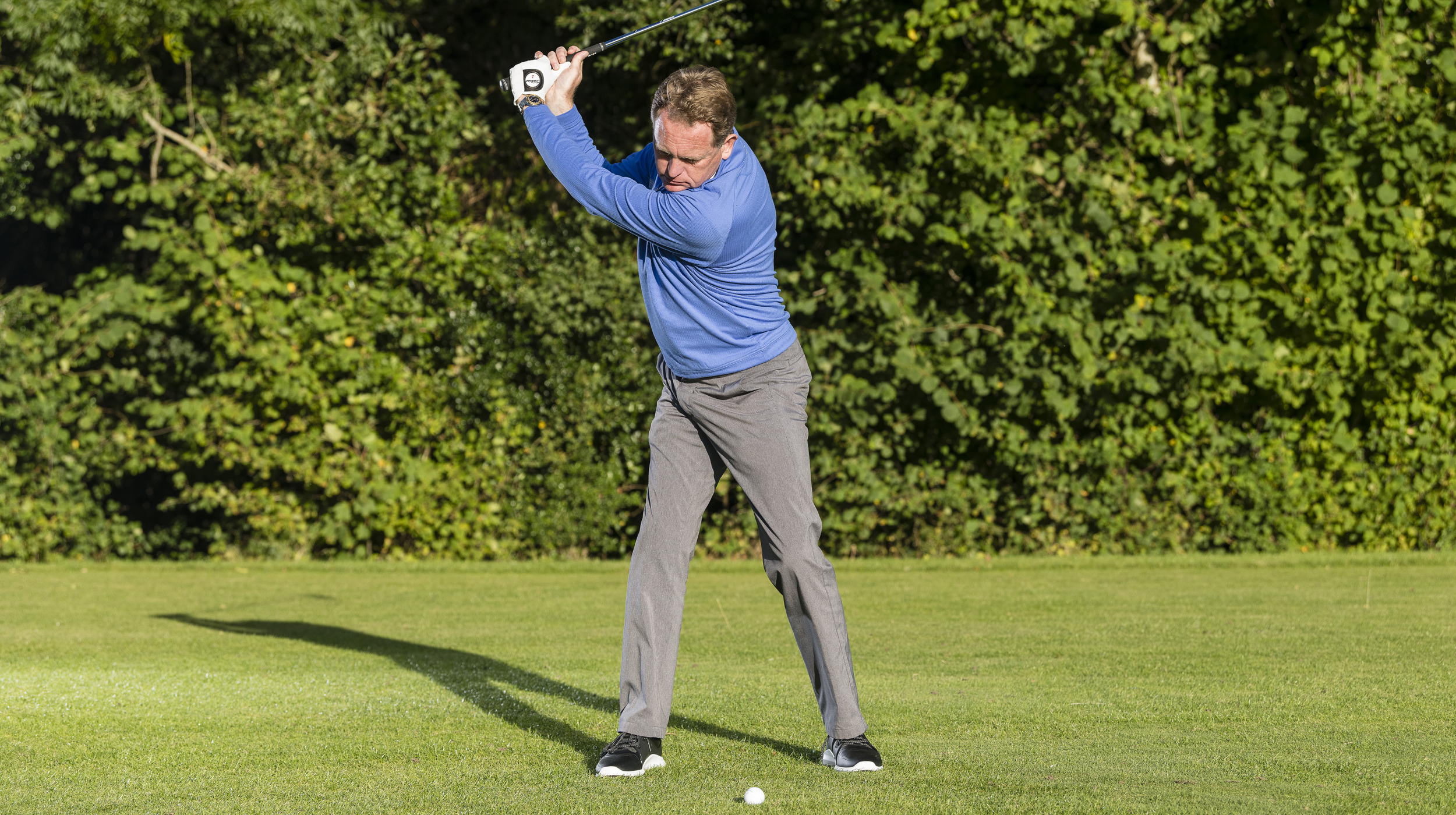
This is often a fault you see with long irons. The temptation is to think, ‘I have to hit it long’, and that often means you don’t complete the backswing. It’s a long arc, so you have to finish your backswing, which means going to the maximum of your turn – whatever that is for you – but, crucially, without swaying. That transfer of weight completes the arc and gives you a fighting chance of getting back to the golf ball with power – natural power built by the arc, not by swinging off you feet. Think of it like this: the ball is just a point on the journey where you collect it. There’s an attack on the golf ball, yes, but you don’t 'attack' it.
Out-to-in swing path (slice)
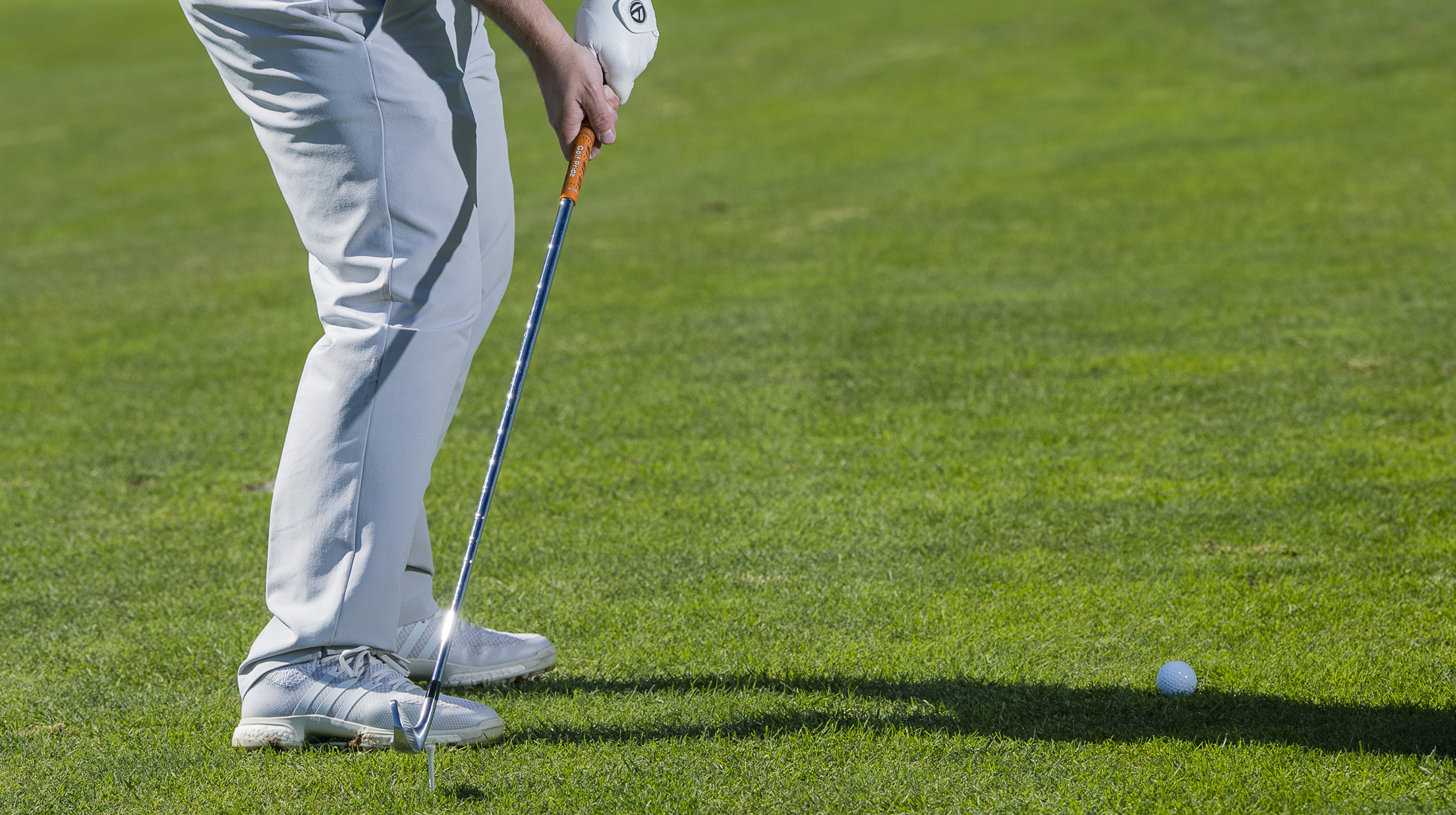
One of the reasons for a slice - and there are a few - can be too much of an out-to-in swing path. This drill can work wonders for those who are seeing the ball start left of the target and then curve back too far right (for right-handers). Put a tee peg level with the laces on your back foot as here. Take your backswing as normal and on the way down try to hit the tee peg away in the direction shown above. What you’re doing here is changing the journey of the club, encouraging you to come more from the inside on the way down. After a few swings, and with those thoughts and feelings, hit some balls. Hopefully you’ll start to straighten out that shape. You may even start to groove a slight draw.
Vertical hand movement (slice)
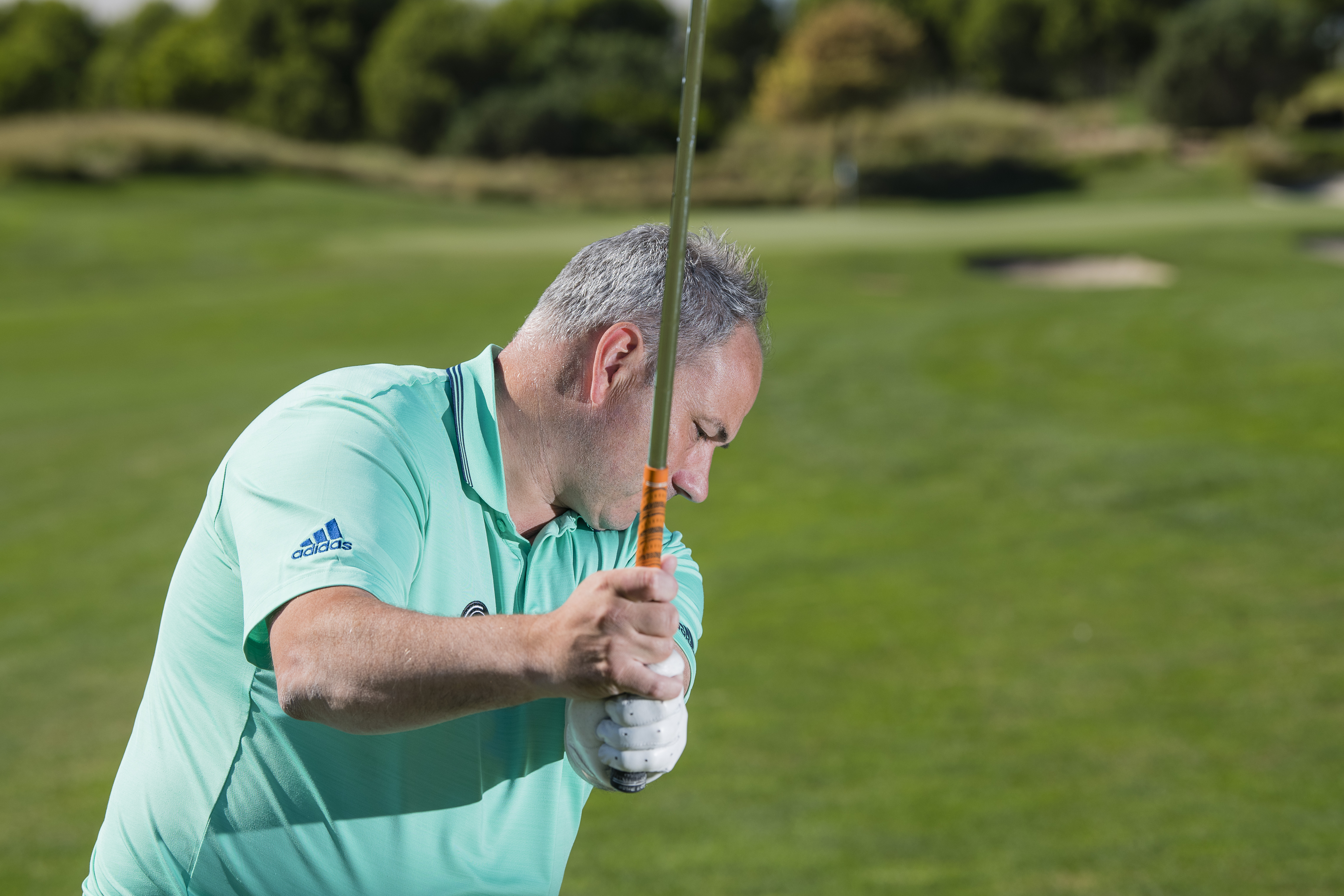
This is a common fault that can cause a slice. A slice is where the ball starts to the left of target and then curves off to the right (for right-handers). Sometimes it will be because your hands are working on a vertical line (as above). From there, the shaft tends to come down on top and across the ball, which applies that destructive left-to-right spin. Many teaching professionals say they like to see the hands moving out and away a fraction, so the center of mass of the shaft drops down in more of a horizontal fashion. Rehearse that movement to get an appreciation of how the hands should just move away a touch.
A 'palm' grip

Many issues with the golf swing can be attributed to poor grip. One common fault is where golfers have too much of the grip in the palm of the left hand. This encourages the left arm to bend and into a position where it’s very difficult to generate power. So, take your grip with the fingers pointing directly towards the ground. The other way to do this is to let your fingers rest in a cradle, again, with the idea of the hand pointing straight down. You want the club to pass through the middle joint of your index finger up to about an inch from the butt of the club (as above). When you take your grip, ideally you want your thumb to be approximately one third to the right hand side.
The overswing
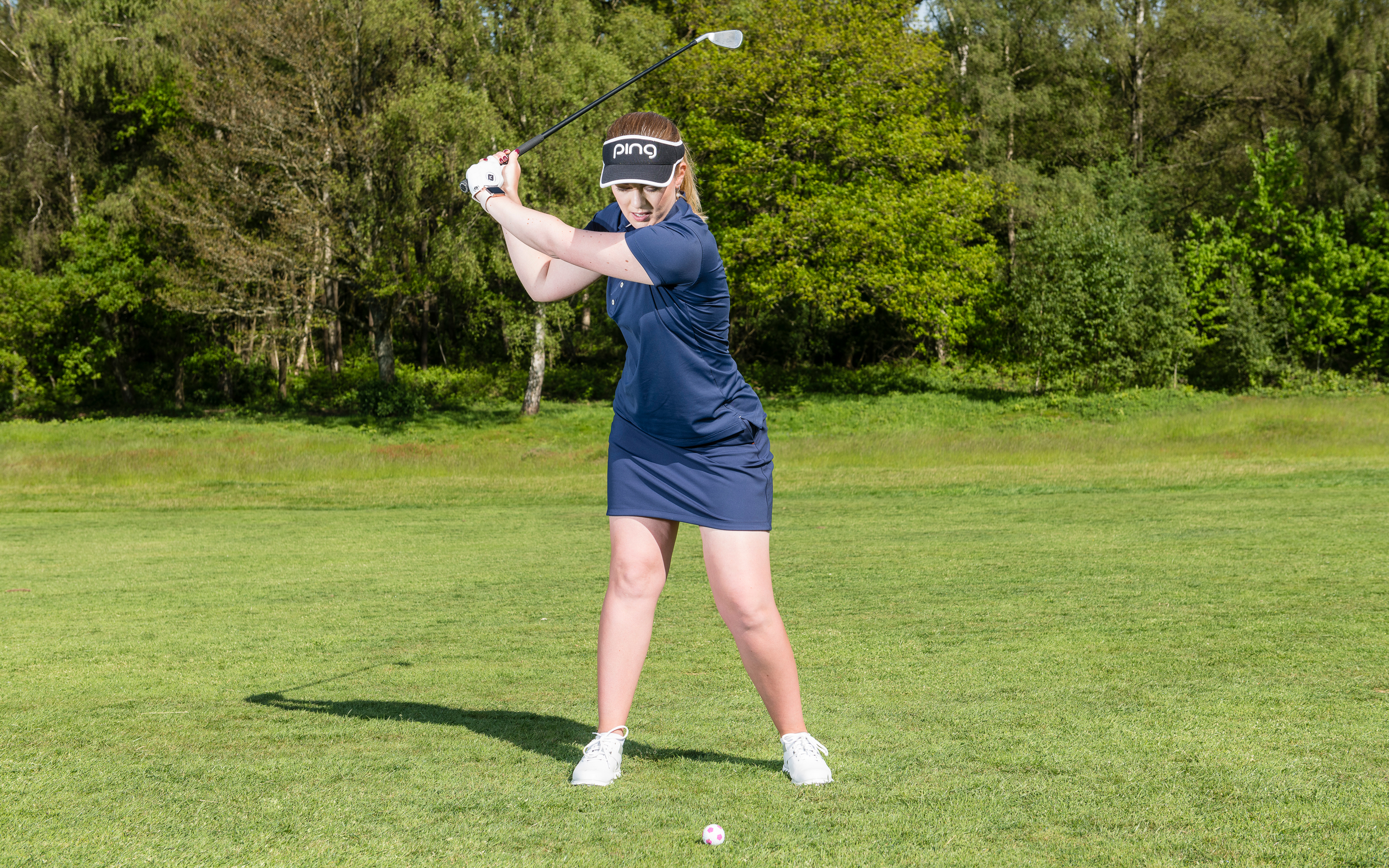
The overswing is normally a consequence of the arms going too long. And this is usually caused by the left arm bending, which enables the club to travel further than it needs to. It can also happen when the body turns too much but this scenario is a lot less likely with club golfers. Ideally, you want a shorter, wider backswing. To achieve this, turn back and load up on your right side (as above). That means your left shoulder should come across to just inside your right foot. Learning how to get a straight left arm in your golf swing will also help. It doesn't have to be completely straight, but there shouldn't be a noticeable bend.
Trail shoulder 'spin' (pulls)
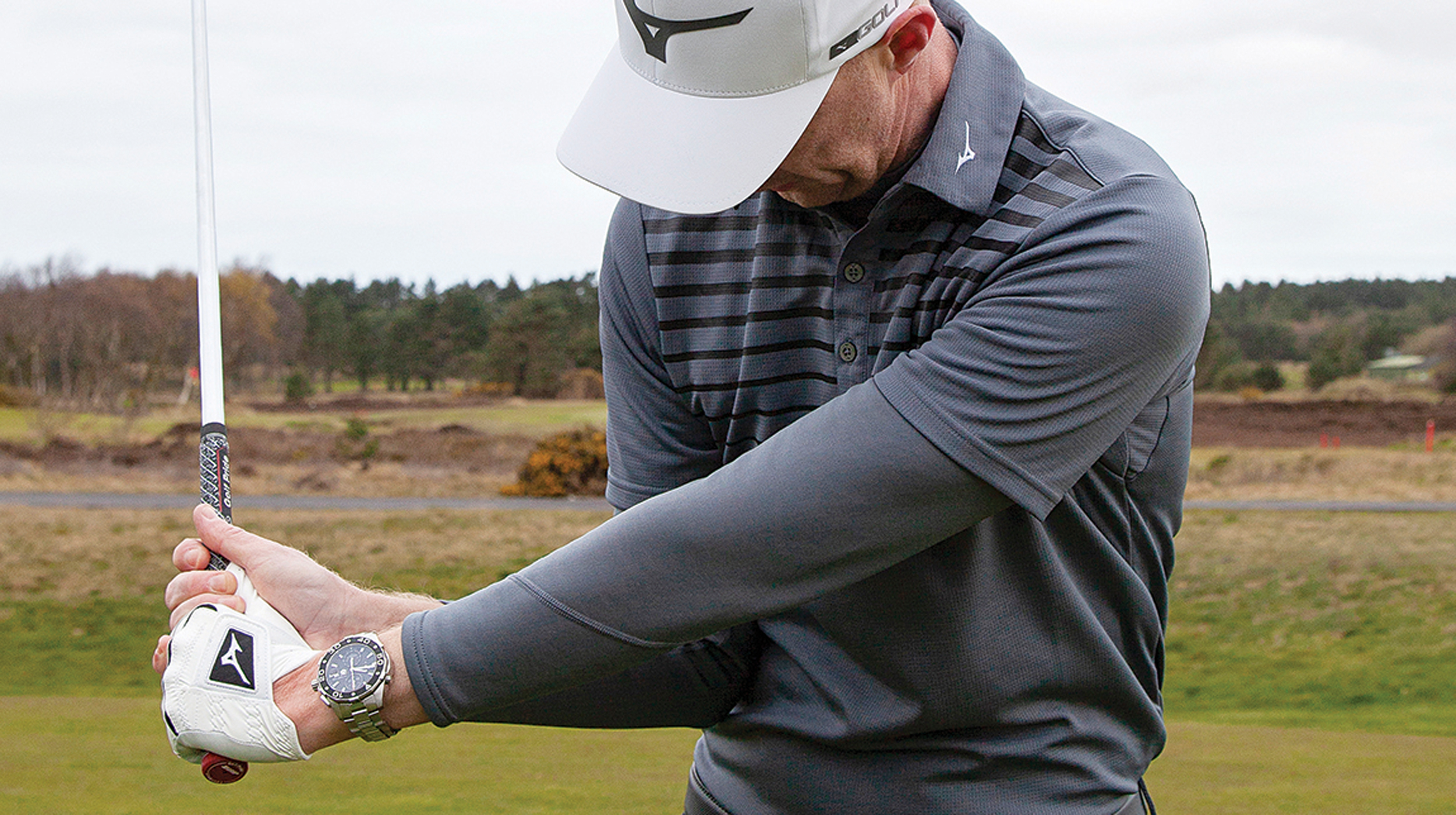
There may be a number of reasons why you are pulling the ball with your irons (to the left for a right-handed player). One common fault is the trail shoulder ‘spinning out’. When it comes it changes the direction of the swing path – so it’ll be more to the left. If the face is square to the path as you go through impact, you’ll hit a pull; closed, a pull hook; and if it’s open you’ll hit a slice. What you want is that feeling that you ‘tuck’ your trail shoulder in (as pictured above). Forget about hitting the ball at this point – just rehearse getting that right shoulder, right arm and right elbow into the right side of your body. Doing this allows everything to come from the inside – it shallows the club out and helps you to deliver the club squarely through the ball. When the trail shoulder and elbow start to work like this, you should find yourself able to turn hard through the ball without the fear of it going left.
Incorrect set-up (hybrids)
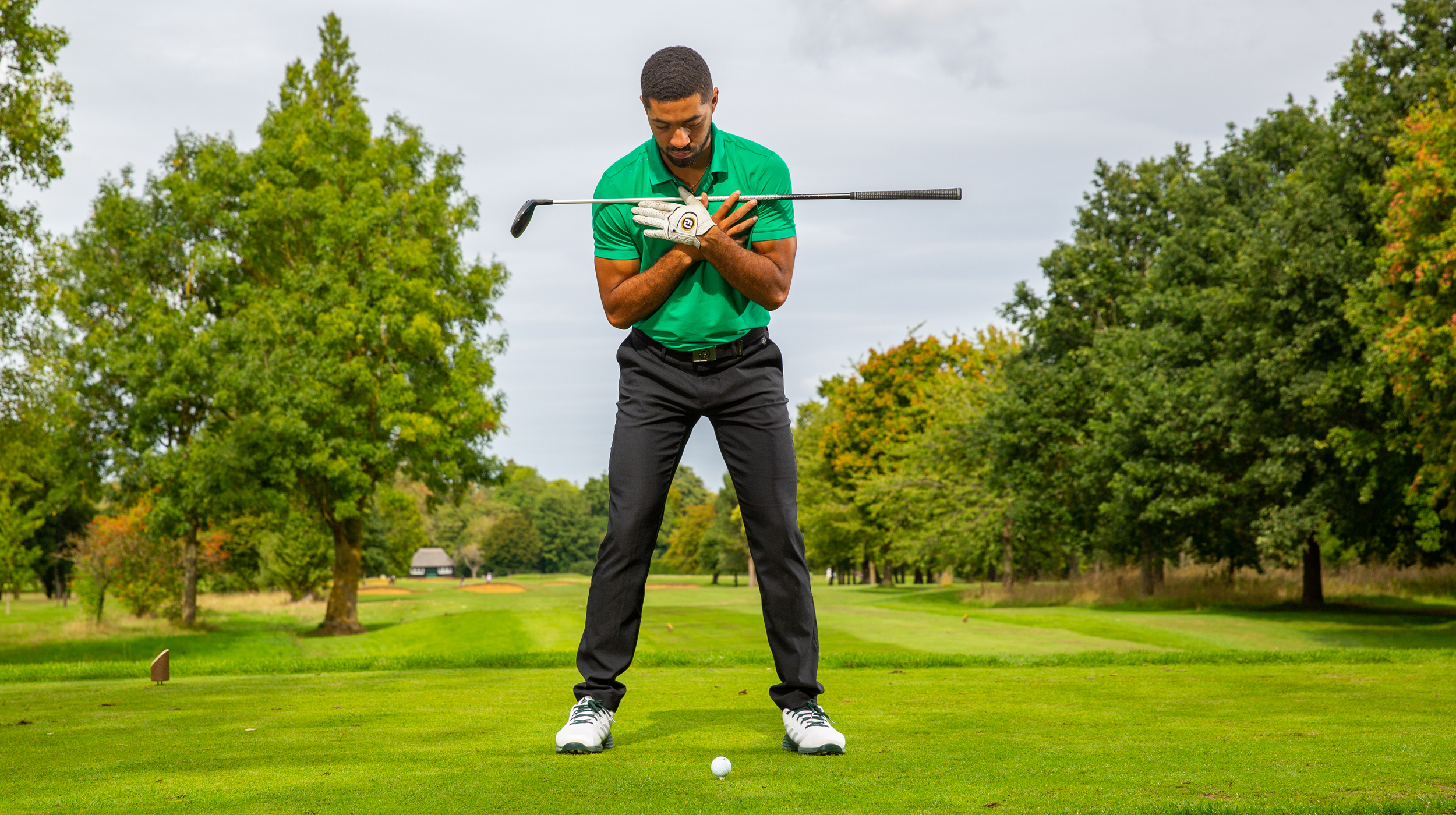
Set up with a fraction more weight on your lead side – about 60/40 – as this will encourage you to hit slightly down on the ball. Position the ball two to three balls forward of center – or approximately three-quarters forward. Set up with your feet a touch wider than shoulder width apart. Club golfers often set up too much like they’re hitting a driver. The ball is way too far forward in the stance, which then affects shoulder tilt and alignment. From here, because you have too much spine tilt (right shoulder way below left), the low point is going to be before the ball. Therefore, you're likely to catch the turf early, or hit it thin off the bottom grooves. A good exercise is to take your club and position it so it sits parallel across your shoulders (as above). You should find that the ball position takes care of your shoulder tilt – more neutral.
No turn (chipping)
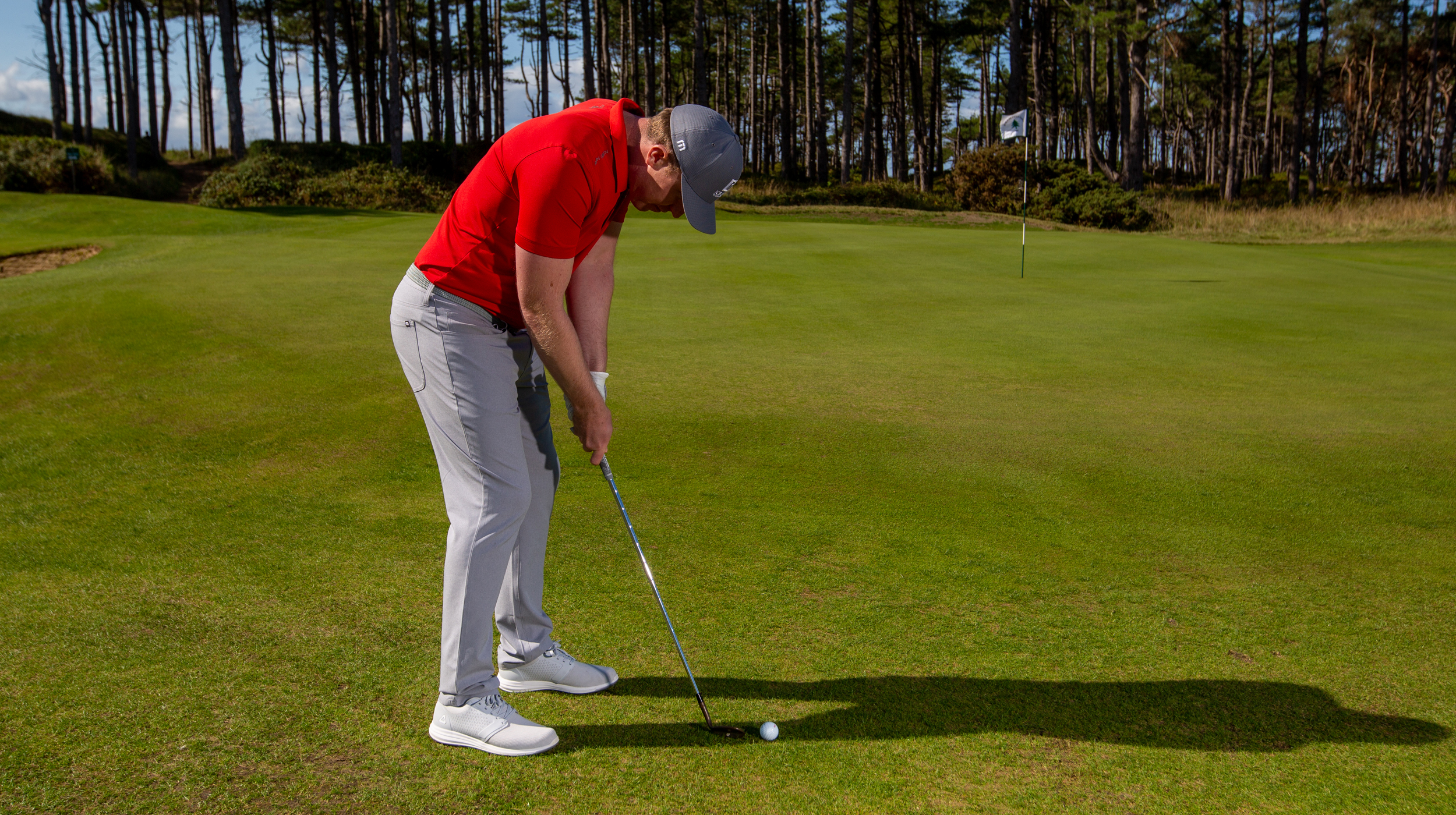
Turn/rotation is something we hear a lot about where the long game is concerned, but it's also relevant in the short game. Does this hunched posture above look familiar? Players can get so nervous about the strike, they become ‘ball locked’ with little or no attention given to the target. Because they’re so focused on the ball, they tend to make contact with the ground and stop, as opposed to turning the hips and chest towards the target. If it helps you to focus more on the target as opposed to the strike, think about how far you want to land the ball towards it.
Lack of rhythm (fairway bunkers)
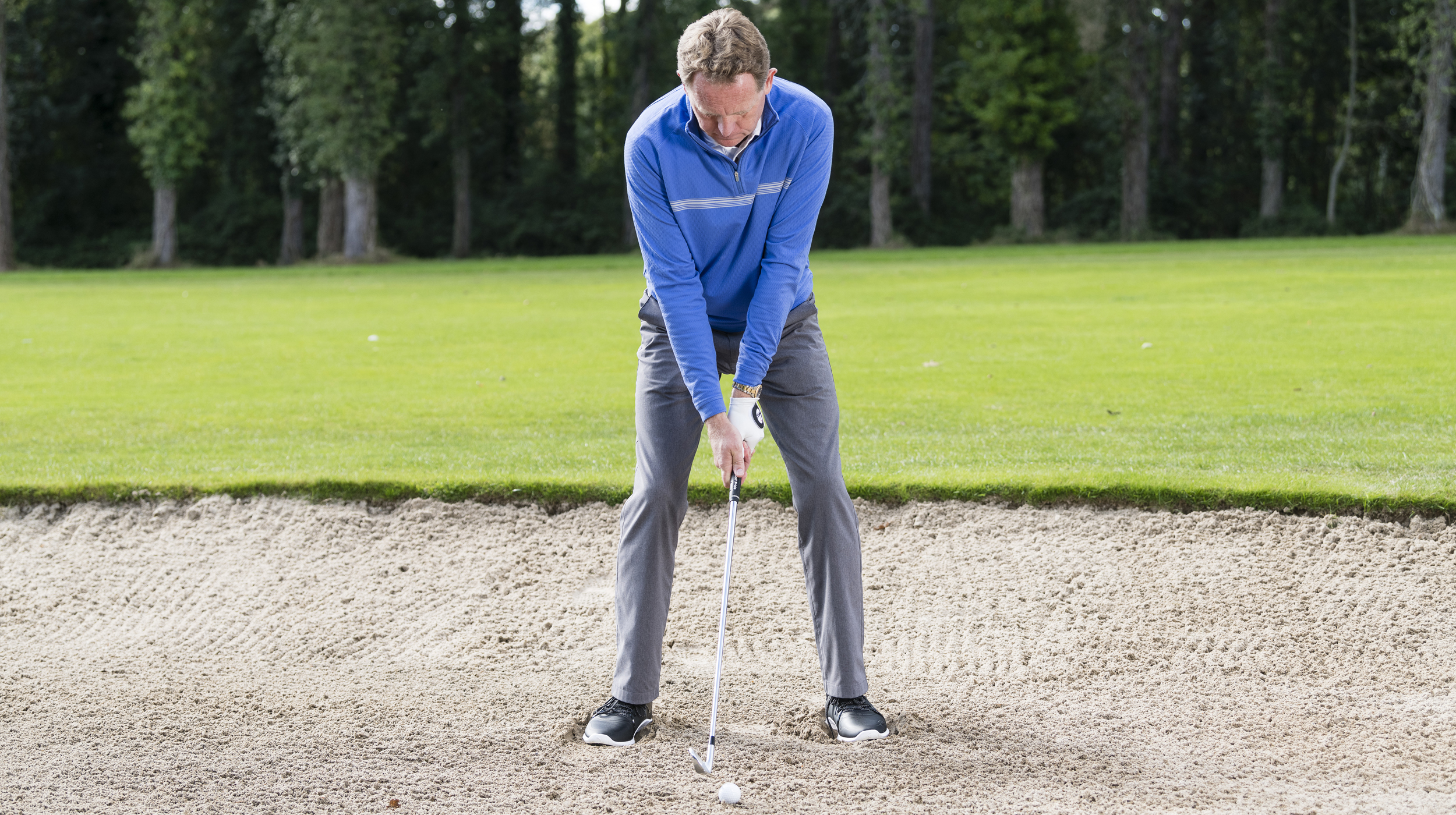
A lack of rhythm can lead to a whole host of problem shots, no matter what club you have in your hands. In fairway bunkers, however, it's crucial to make a nice rhythmical swing in order to make clean contact and clear the lip. Try gripping down the club a touch, which will help you to catch the ball cleanly. Stabilise yourself by creating a little wedge of sand with your insteps (don't shuffle on the sand) both ways; this knocks the knees in slightly and secures you nicely in place (as above). You don’t need to try and muscle the ball out, or tilt back for fear of not being able to clear the lip. Do that and your legs are likely to slip.
Poor balance

If you want to strike the ball consistently well, it is essential that your weight is moving correctly through the swing. Club golfers frequently lose their balance; if you're one of them, this drill is worth trying. When you turn away from the target, hold your hands with the palms facing directly away from your body (as shown above). Rotating through, hold your finish position with the palms of your hands facing the target. As well as helping you to feel the correct body positions, it will help your balance and encourage you to transfer your weight. Poor weight transfer means that a player is going to have to hit more with the hands and arms because they’re not generating energy from the ground.
Bad takeaway

A common fault is for the takeaway to start with the weight going too much over the left knee. You might get away with this when hitting an iron, but it’s a horrid position to be in with a driver. You find yourself trying to turn away but the weight is too much on the left, with the right leg straightening and the left knee bending (as above). It’s known as the reverse pivot, where the weight goes onto the left and you end up falling back to the right. The result? Most likely low and left, or a big high slice. A good takeaway starts from the left shoulder. This can be a good swing thought to have to help you transfer your weight in the right way.
Strong Grip
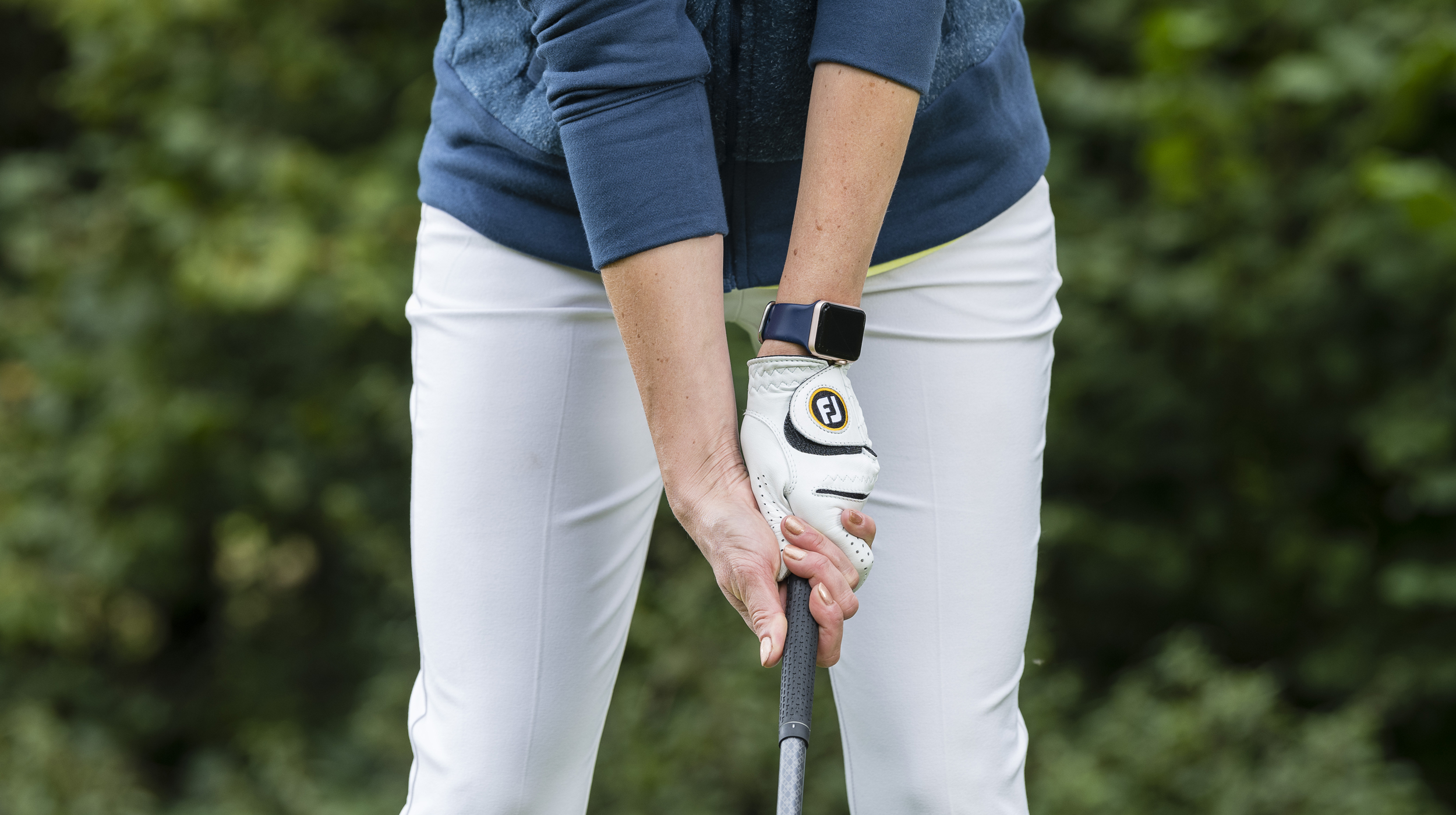
For right-handers with a strong grip, what you’ll notice is that your top and bottom hands are turned too much to the right. So you’ll see three or even four knuckles on the left hand and none on the right (as above). This promotes active hands through impact, which leads to inconsistency due to a lack of control. Shutting the clubface down like this means people who have a strong grip tend to hit the ball predominantly from right to left (hooks). You should be able to see two or two-and-a-half knuckles on the lead hand. Additionally, the thumb and index finger should form a ‘V’ with the line pointing towards your right shoulder.
Hook swing
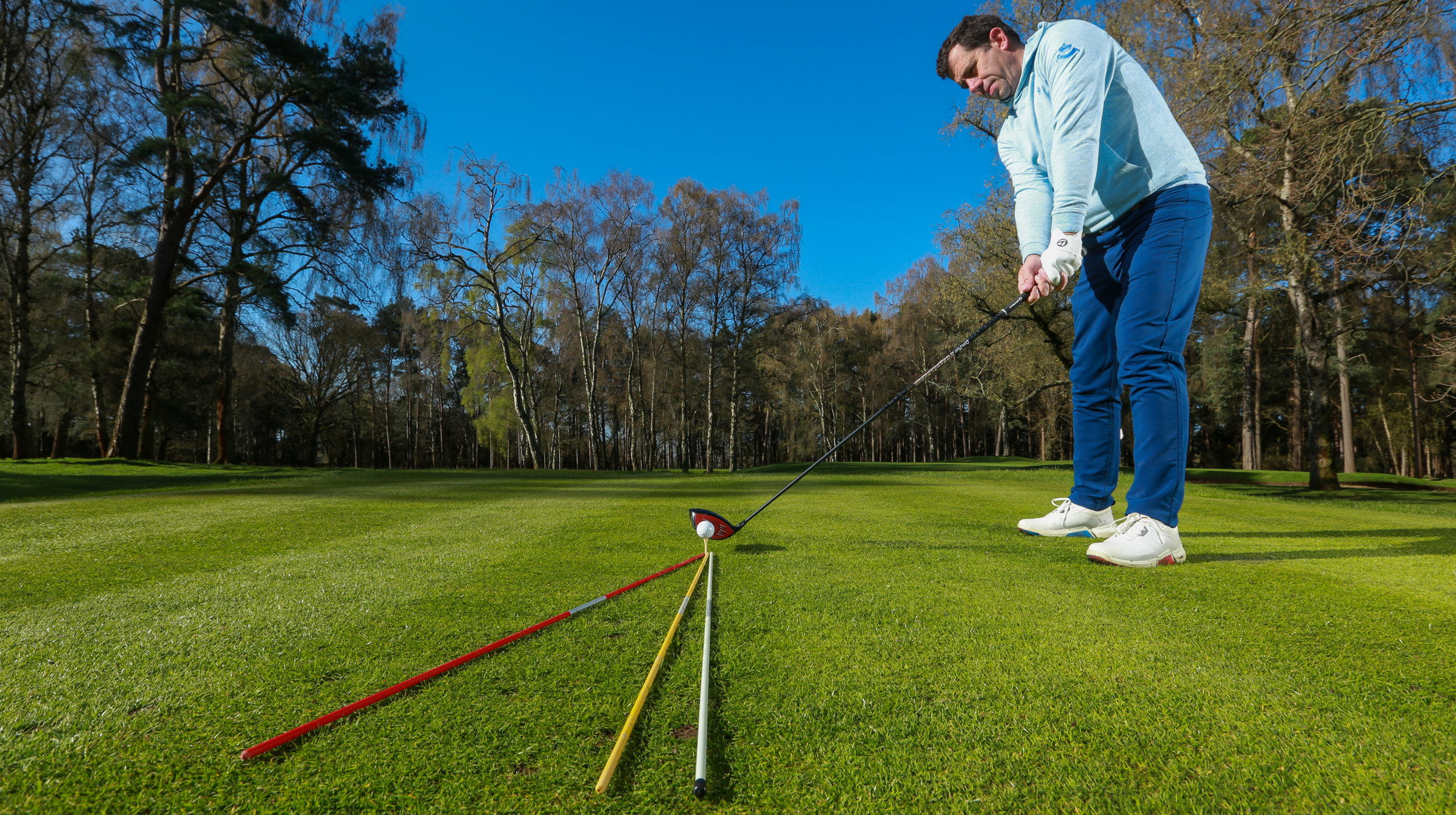
Let’s say that the white rod in the above picture represents the target; the red one is the swing path and the direction the club is travelling through the ball; and the yellow one is where the clubface is pointing at impact, which, in the case of a hook, will be left of the red rod. The further this yellow rod (clubface) gets away from the red one (swing path), the more the ball will hook – so hooks are caused by the club travelling to the right and the clubface working over to the left. Try to feel more open, which will encourage the path to go more to the left and help the clubface to be squarer through the ball.
Gripping too tightly (fairway woods)
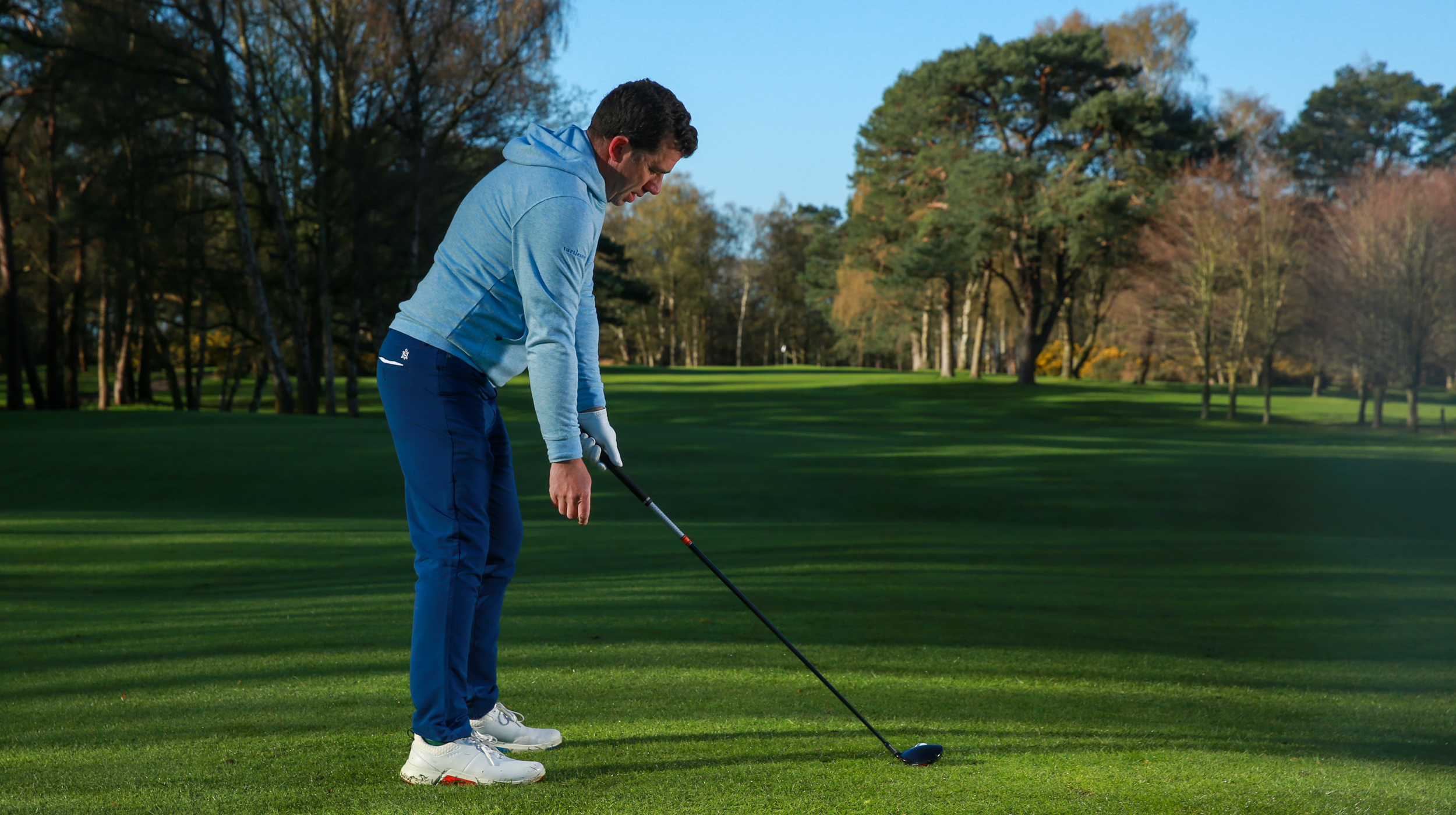
Often club golfers struggle to hit their fairway woods because they become really tense about getting the ball airborne and, as a result, grip the club really tightly. This makes it very difficult to get the flow and release you need in the swing. Try letting your arms hang naturally (as shown) to get used to that feeling of being more relaxed. Note the good angles at address, too. Stand nice and tall – no slouching, which is another very common mistake.
Hitting down (driver)
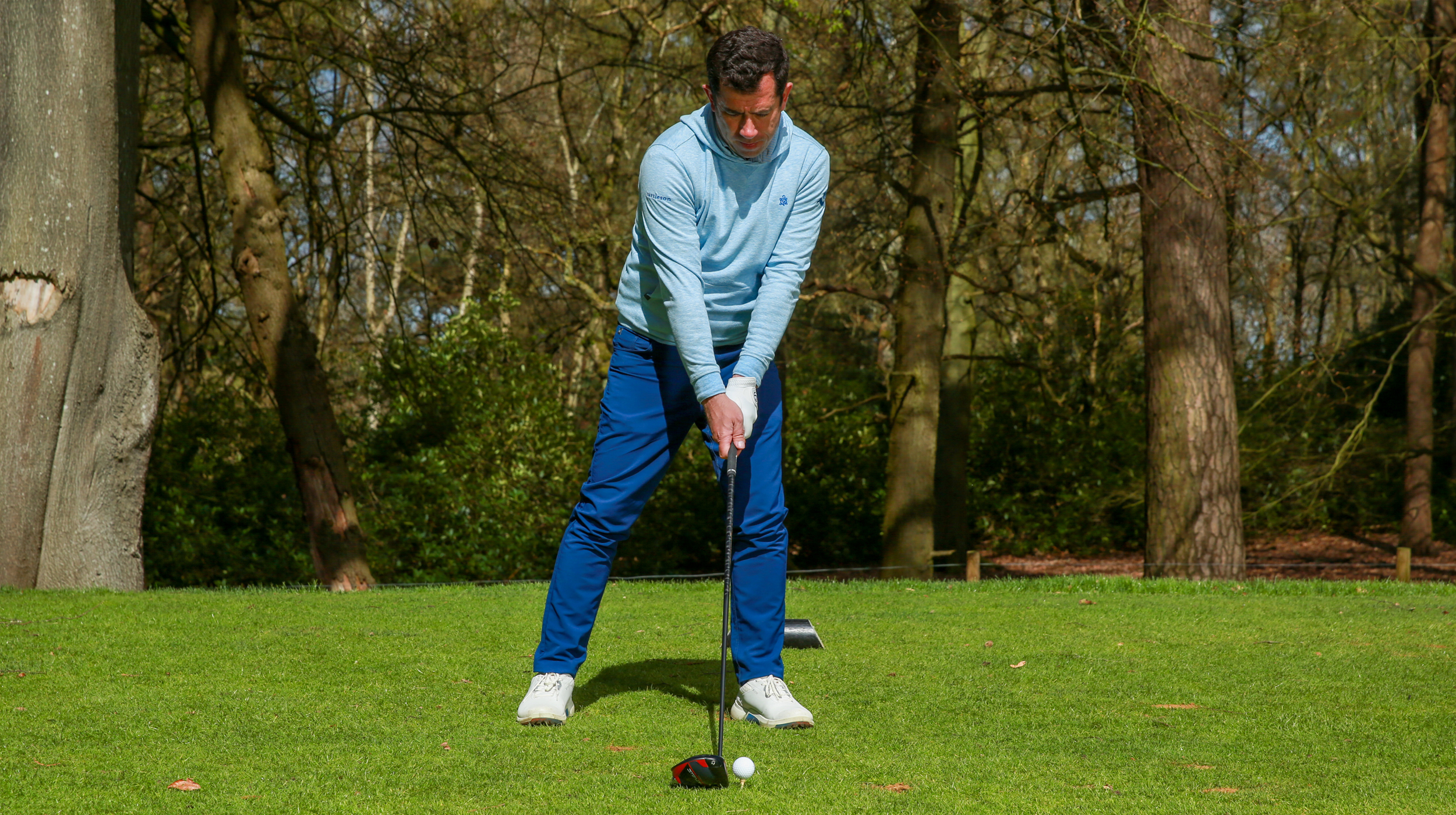
We’ve all hit one of those drives where the ball stalls in the air and seems to just fall out of the sky – and it’s not always because we’re playing into a headwind. Often it’s simply down to putting too much spin on the driver. One of the reasons for excessive spin is teeing the ball too low. Lots of amateurs tee the ball too high, too – which can cause its own set of problems – but when it sits beneath the crown, it encourages you to hit down (as above). Don’t be afraid to tee the ball up so you can see around half of the ball above the top edge of your driver. Just by doing this, you’ll instinctively find yourself hitting the ball more on the up.
Weak grip
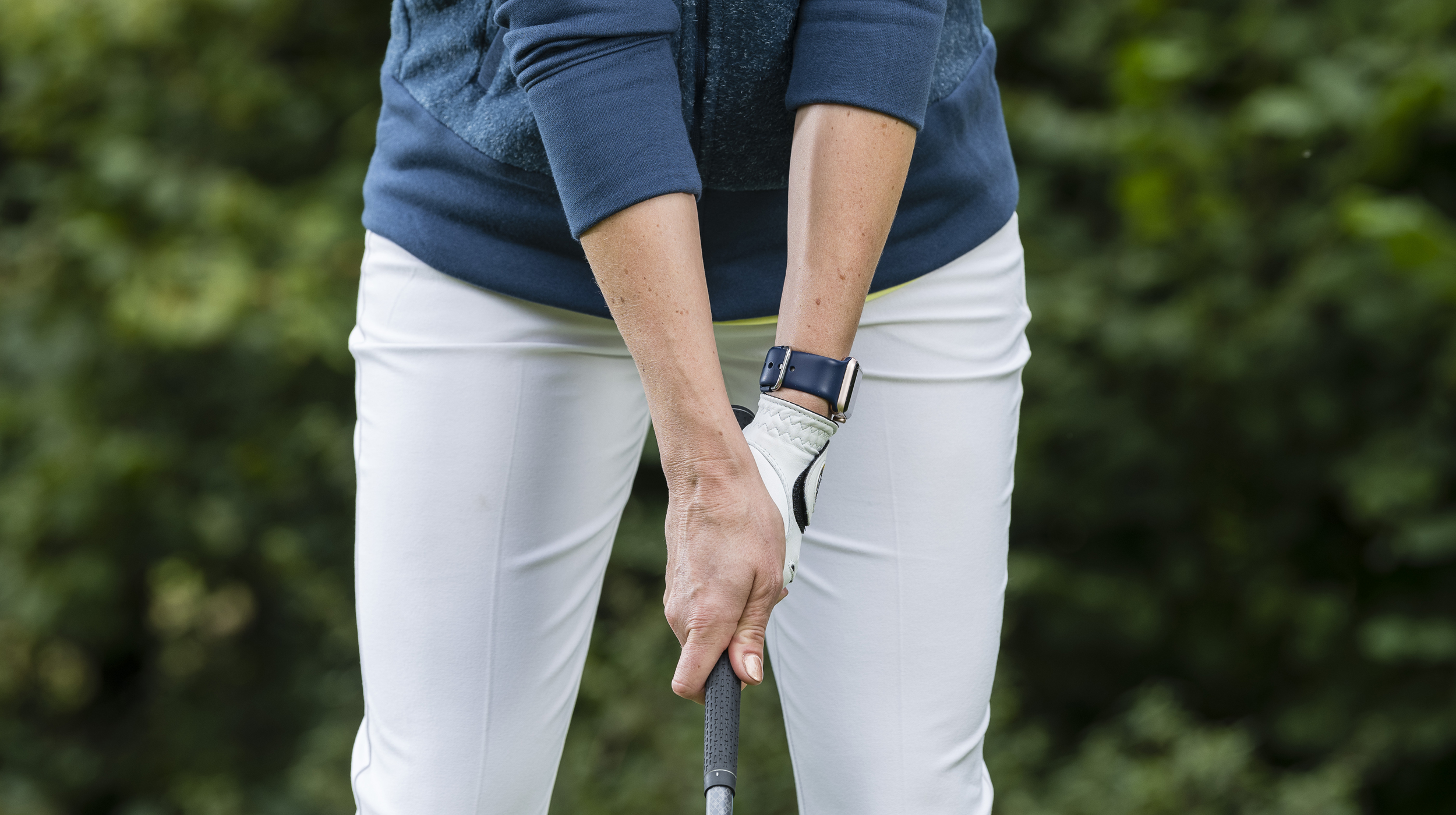
A weak grip is where both hands are wrapped too far round to the left-hand side of the grip (right for left-handers). This makes it really hard to release the club properly, meaning it tends to be open at impact, which leads to pushes, fades and slices. On your lead hand you may notice that you can only see one knuckle or even less at address. In contrast, on the trail hand, you will be able to see too many knuckles - perhaps as many as three or four. If this is you, you've got a weak grip which could be the root cause of your troubles. As a guide, you want to see around two knuckles on the left hand and two on the right when standing at address.
Swinging too fast
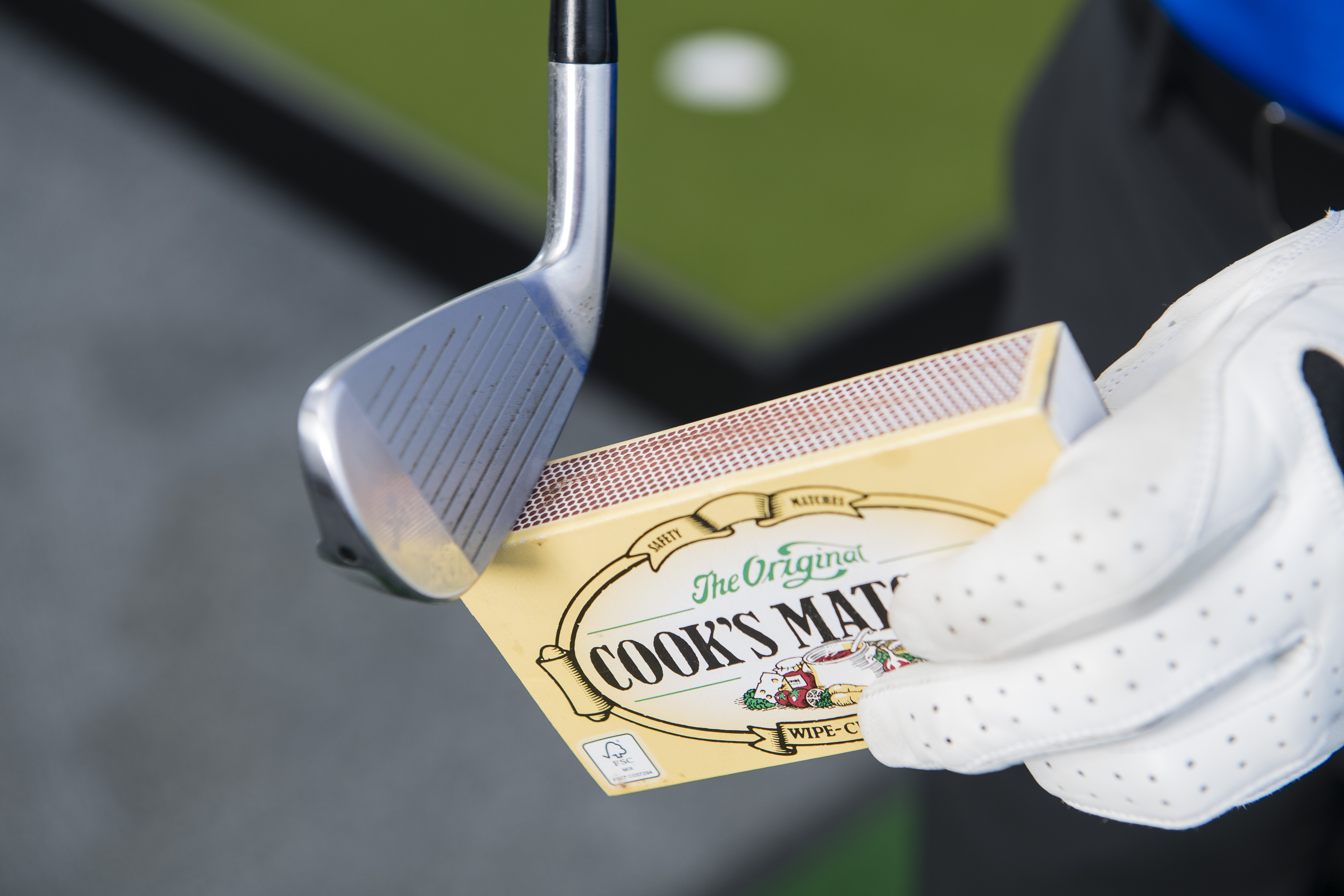
If you watch Tour players, it's easy to conclude they all just swing at full speed. However, most of the time everything is in sync. Club golfers have a tendency to really go at the ball, especially with their long irons, because they think they have to hit the ball hard. You won’t get the desired result with your long irons without the correct speed through impact. However, it’s not all about swinging as fast as you can, either. As the club comes into impact, it’s like you’re striking a match; imagine that same sound. A sharp sound through impact means you’ve generated good speed, and, crucially, in the right area. This will help you improve the launch, control and distance you hit your irons.
Scooping (chipping)
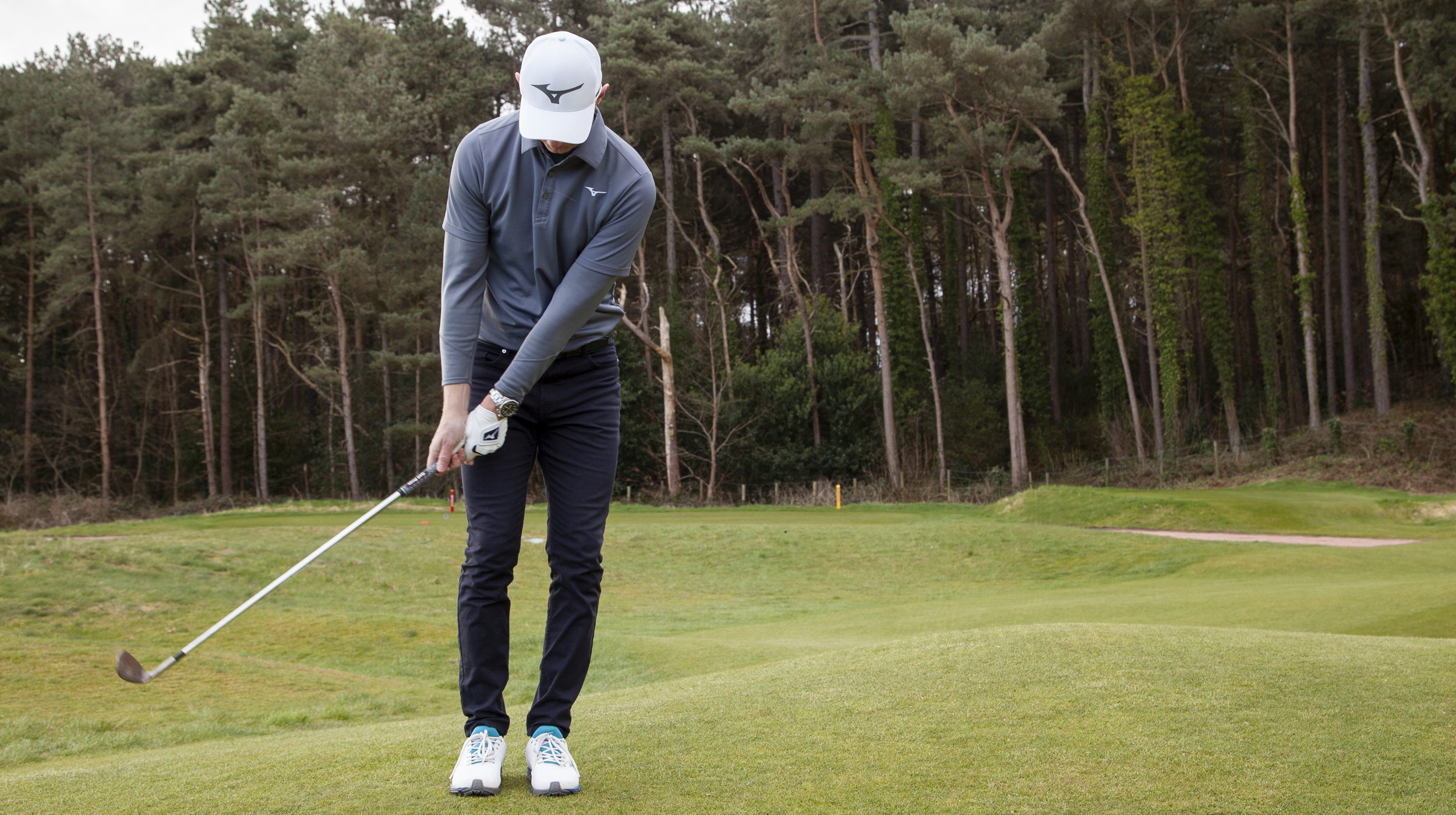
Poor chippers have a tendency to lean back and try and scoop the ball up. Maintaining your arm structure is the key to consistency – that extension of the arms with the little triangle that gets created (as pictured above). Your grip pressure should be fairly light – about 5/10 (10 being strong), because you want to feel the weight of the clubhead swinging through the ball. Get used to working that triangle. Forget about hitting the ball. Just get used to feeling how the sole of the club has to just brush the ground for you to make contact with it and get it up in the air.
Not staying centered (pitching)

One of the most common swing faults with pitching is where players don't stay centered - there's too much movement. For a pitch of about 100 yards, your stance should be slightly narrower than shoulder width, perhaps 12 to 18 inches apart with your heels (as above). You want the pressure to stay that little bit left to encourage a slight downward angle of attack. Be mindful not to move your center away as this moves the bottom of the swing behind the ball, which will often result in a heavy strike.
Incorrect ball position (pushes)

Incorrect ball position can lead to a number of swing faults and problem shots - the push being one of them. What you often see with 'pushers' is the ball too far back in the stance. The problem here is that the club strikes the ball too early in its arc. The club will naturally be pointing a little right in this scenario. For mid-irons, set the ball a fraction left of middle in your stance. From here, your shoulders should be much better aligned and you should find it much easier to deliver the club back square to the ball at impact (as above).
Hanging back
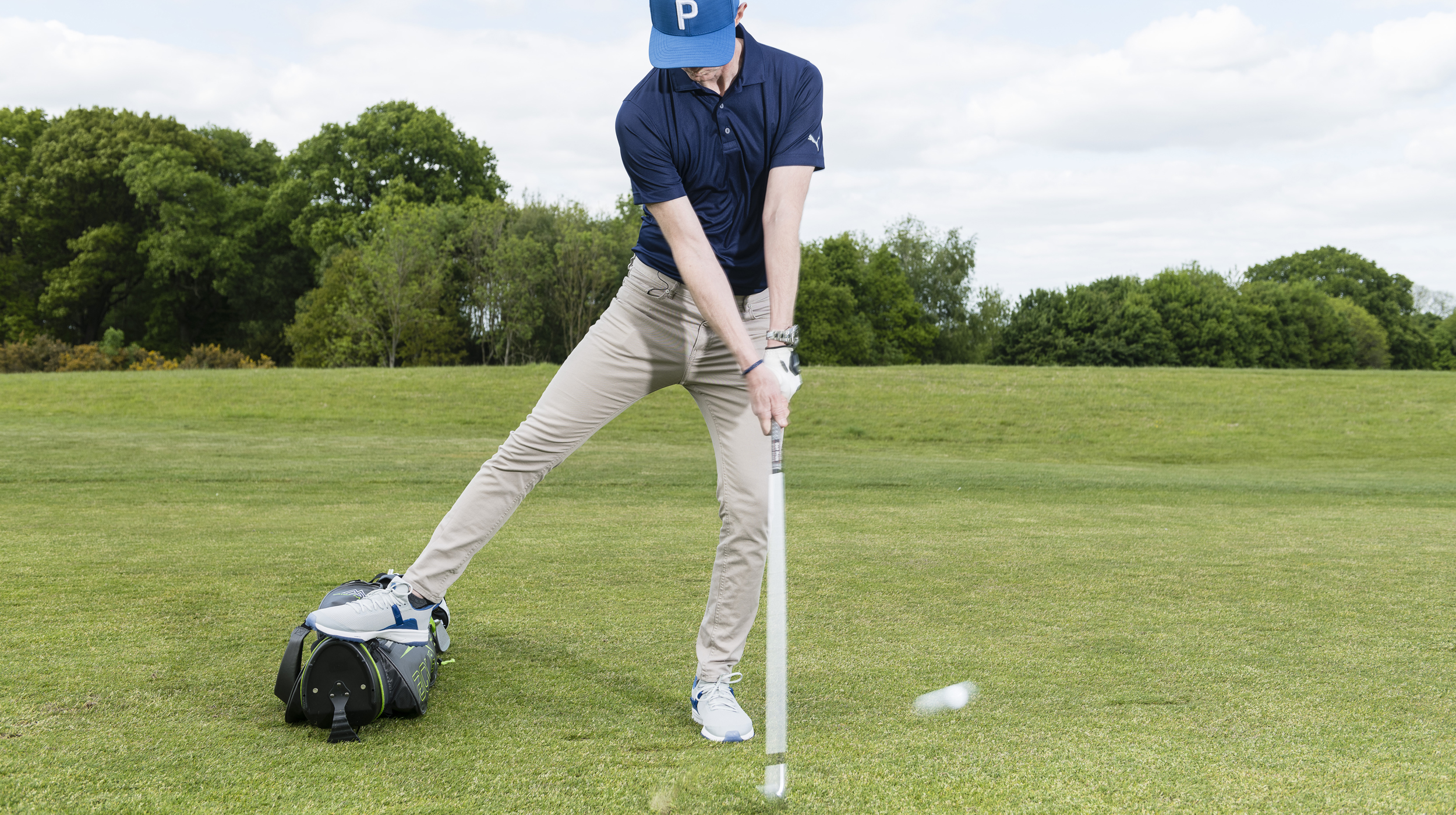
It's a term you may well have heard. A lot of amateurs tend to 'hang back'. It falls into the same area as poor rotation and incorrect weight transfer. Rest your trail foot on top of your golf bag. This is getting you used to the feeling of what it’s like to have the pressure forward through impact, and it’ll encourage a downward angle of attack. Just take some half swings. You’ll struggle to hit the ground first if you try this drill; it’s really effective for getting the weight moving towards the target, so the club hits the ball before the ground. Make sure that you flex your lead knee more than normal, as it’s pretty much taking all the weight.
Keeping the head still
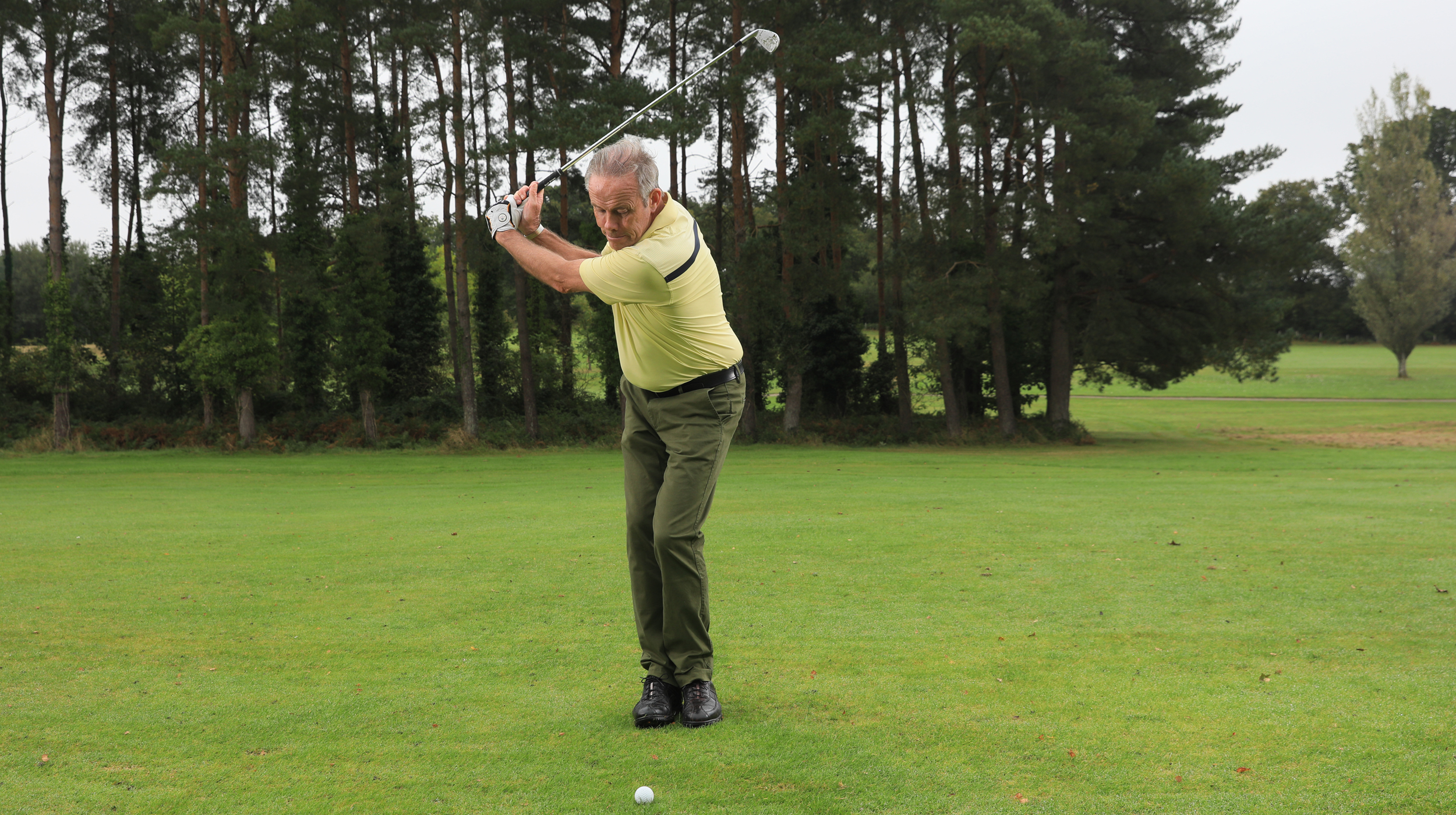
Many club golfers cling to the idea that they should keep their head still; they make a swing where their head doesn’t move at all, and they just lift the club up into the air. As a result, they’re in the wrong position at the top of their backswing. Once there, aware that they need to get their weight through, they’ll lurch at the ball with their legs. All co-ordination, timing and rhythm gets lost. Try focusing on balance. Put your feet together and make your normal full swing with an iron (as pictured above). Initially, don’t worry about hitting a ball – just focus on brushing the grass and holding your finish. The classic mistakes are going too fast at the start of the swing, or too fast from the top of the backswing. If you’re too fast, this drill will let you know – you’ll lose your balance. Try it a few times before repeating with your normal-width stance.
'Hitting' at the ball
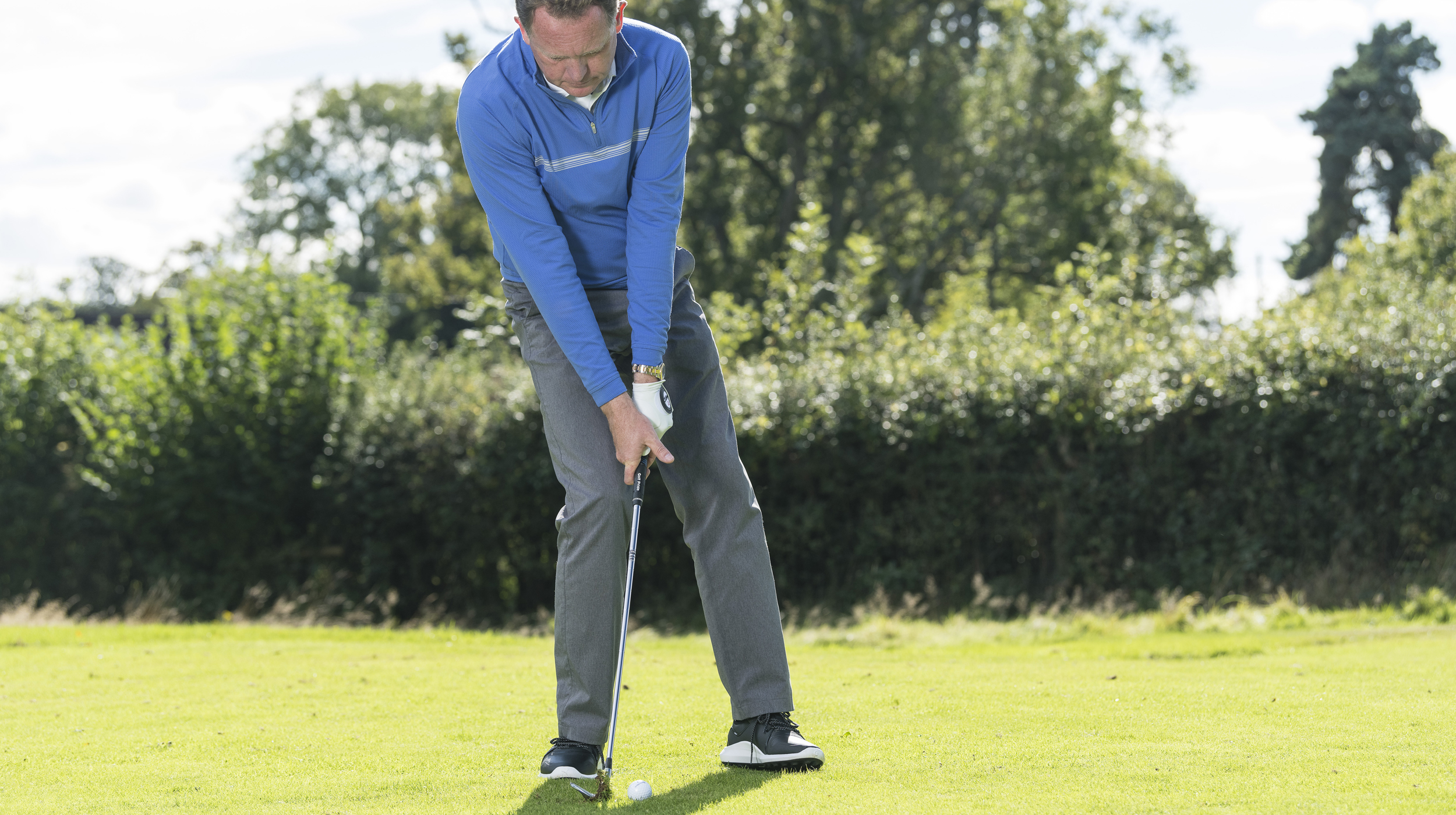
This is something we see a lot of with pitching - players really trying to 'hit' at the ball, as opposed to 'collecting' it. You have to trust the loft to elevate the ball. Start by taking a much narrower stance than you would with your irons. If anything, you may want a fraction more weight on your front foot but amateurs have a tendency to tilt their weight onto the front foot, which encourages them to get way too steep. From there, they fall back onto the trail foot (pictured above) – and more often than not that’ll result in a chunk, or the club will bounce off the ground and hit the ball thin. Keep in mind that ‘quiet legs’ are better.

Michael has been with Golf Monthly since 2008. A multimedia journalist, he has also worked for The Football Association, where he created content to support the England football team, The FA Cup, London 2012, and FA Women's Super League. As content editor at Foremost Golf, Michael worked closely with golf's biggest equipment manufacturers and has developed an in-depth knowledge of this side of the industry. He's a regular contributor, covering instruction, equipment, travel and feature content. Michael has interviewed many of the game's biggest stars, including seven World No.1s, and has attended and reported on numerous Major Championships and Ryder Cups around the world. He's a member of Formby Golf Club in Merseyside, UK.